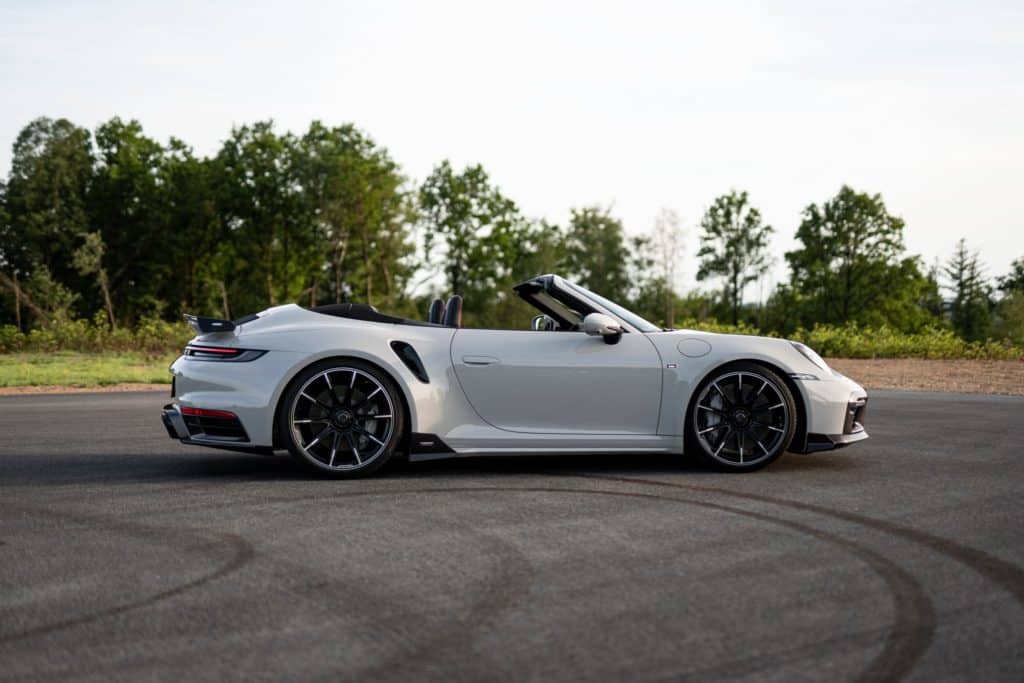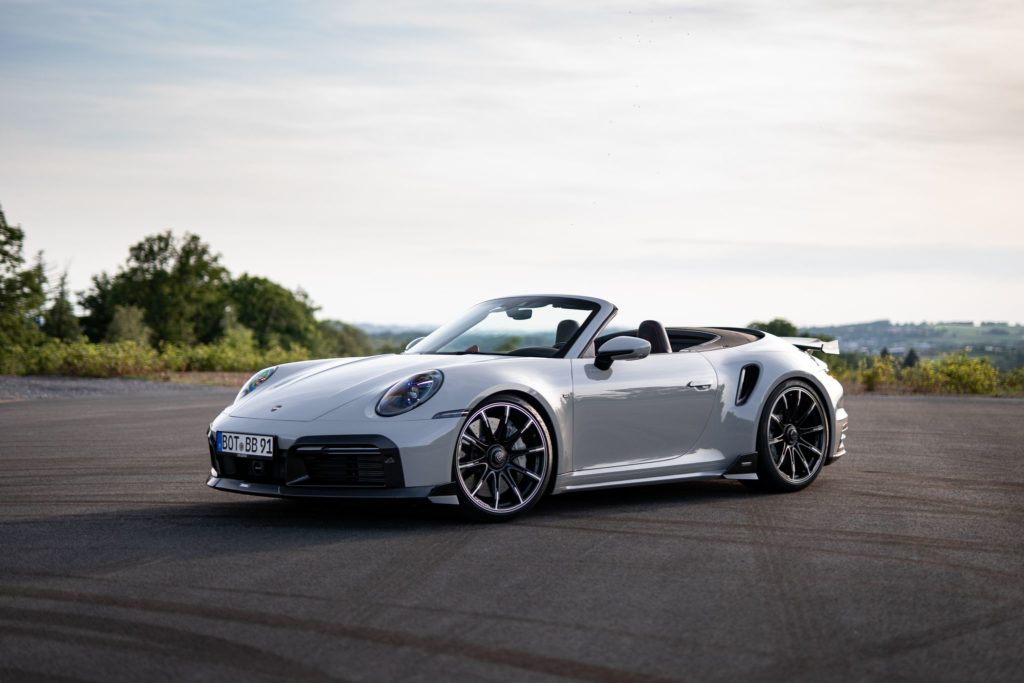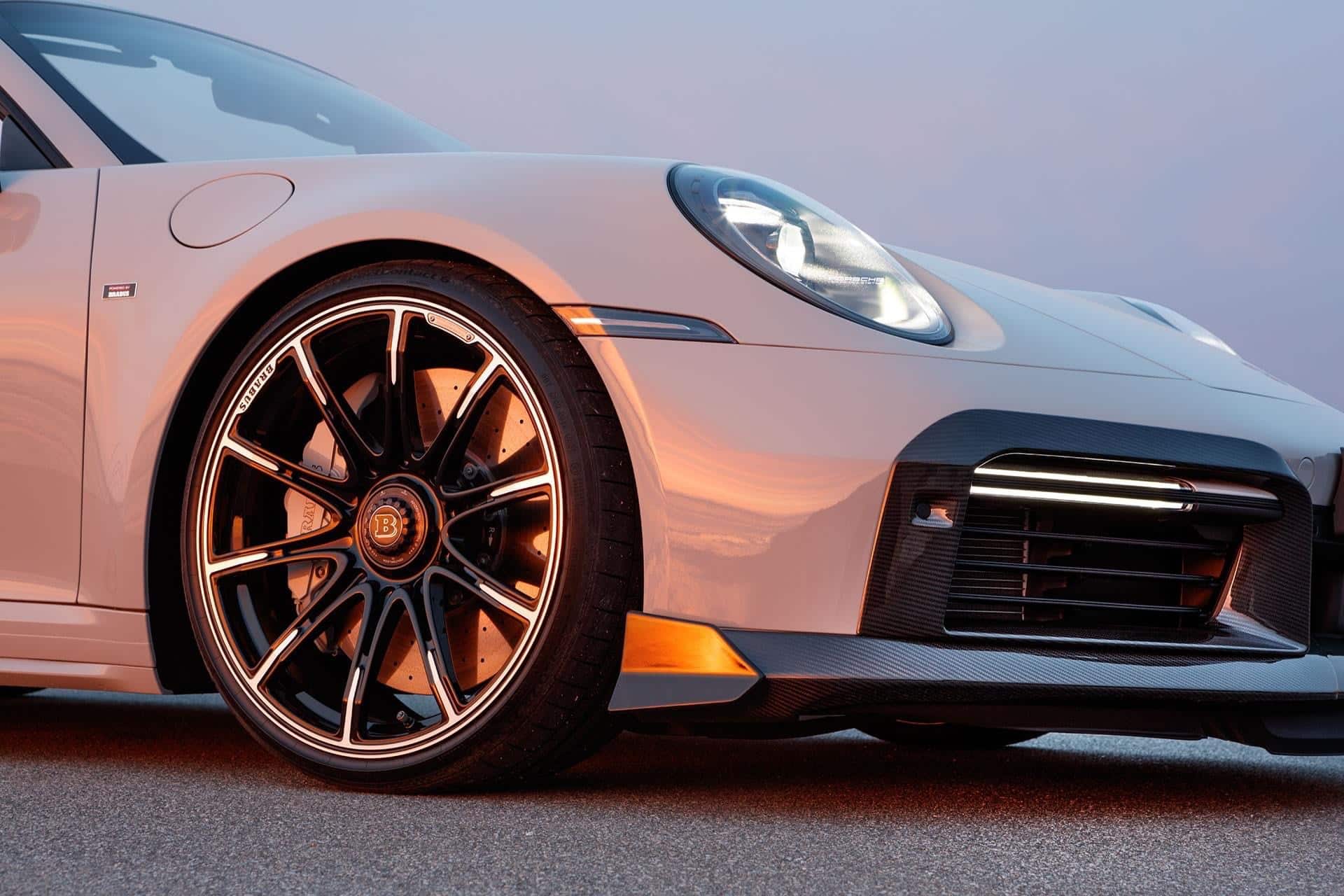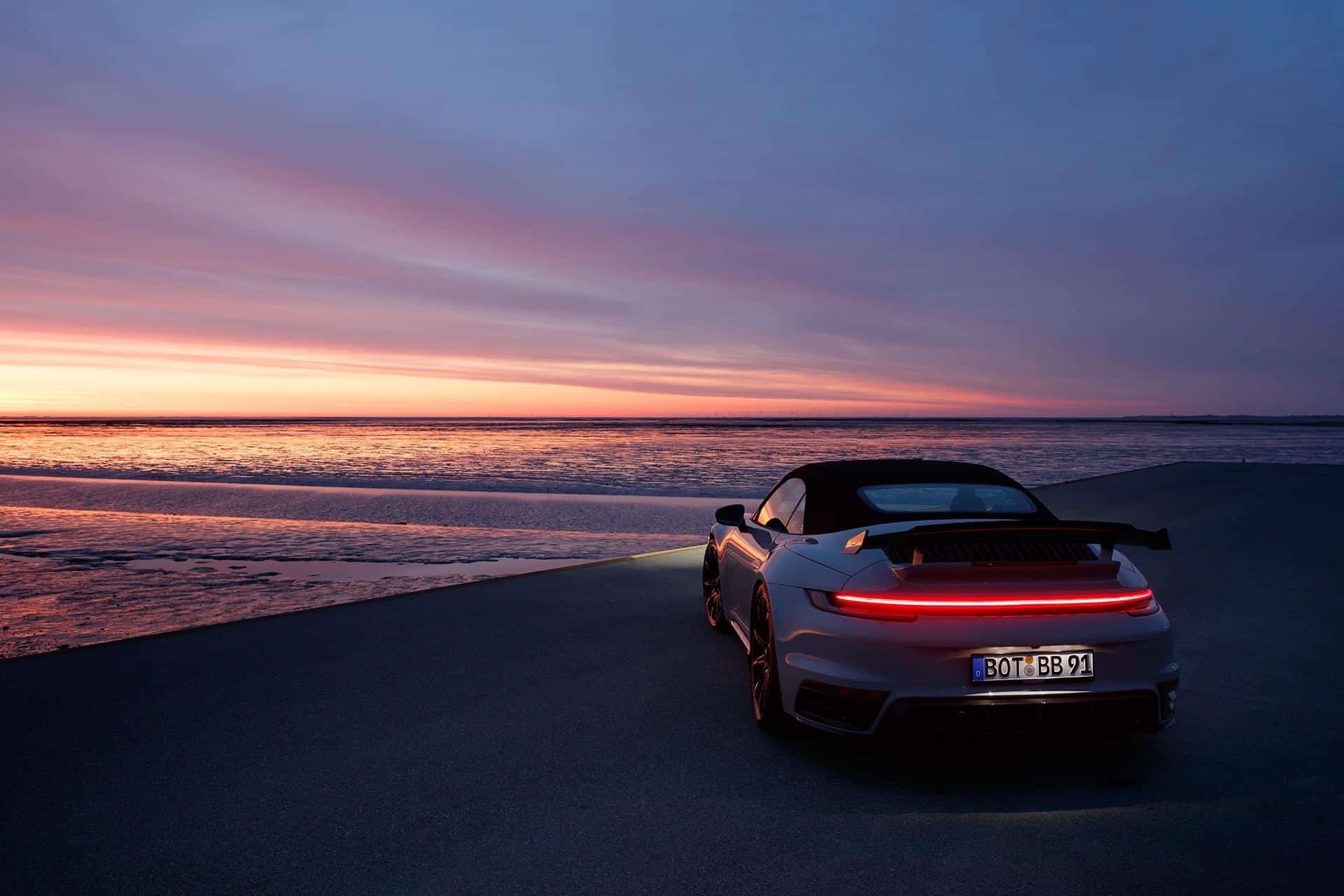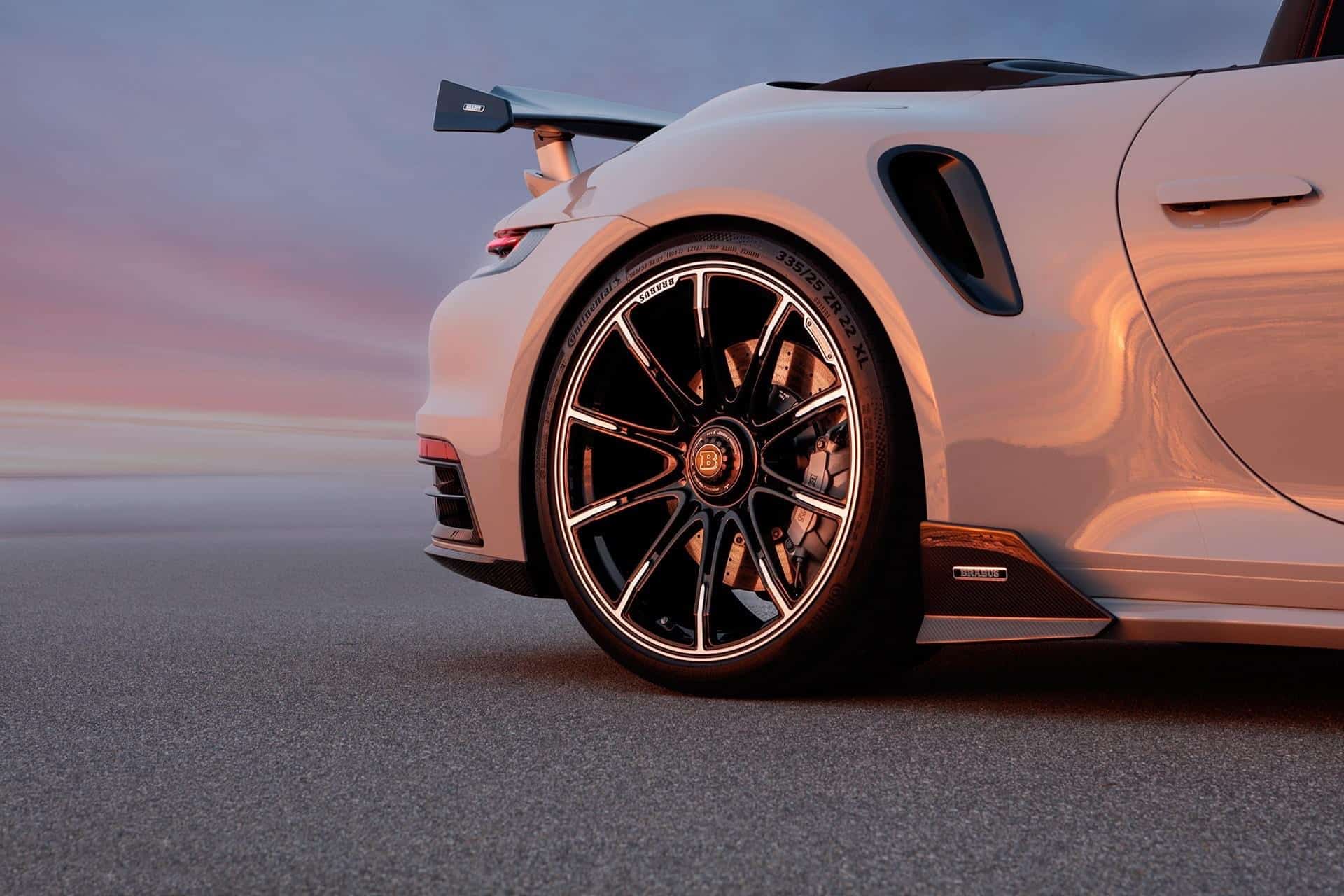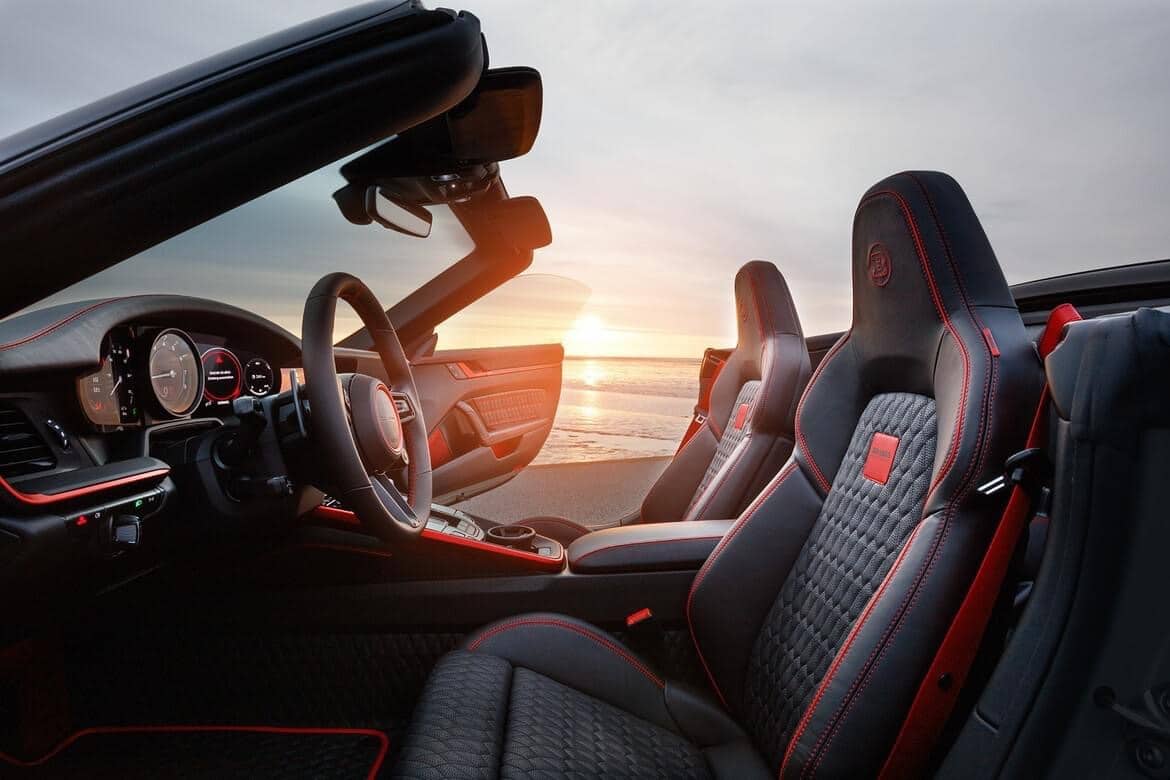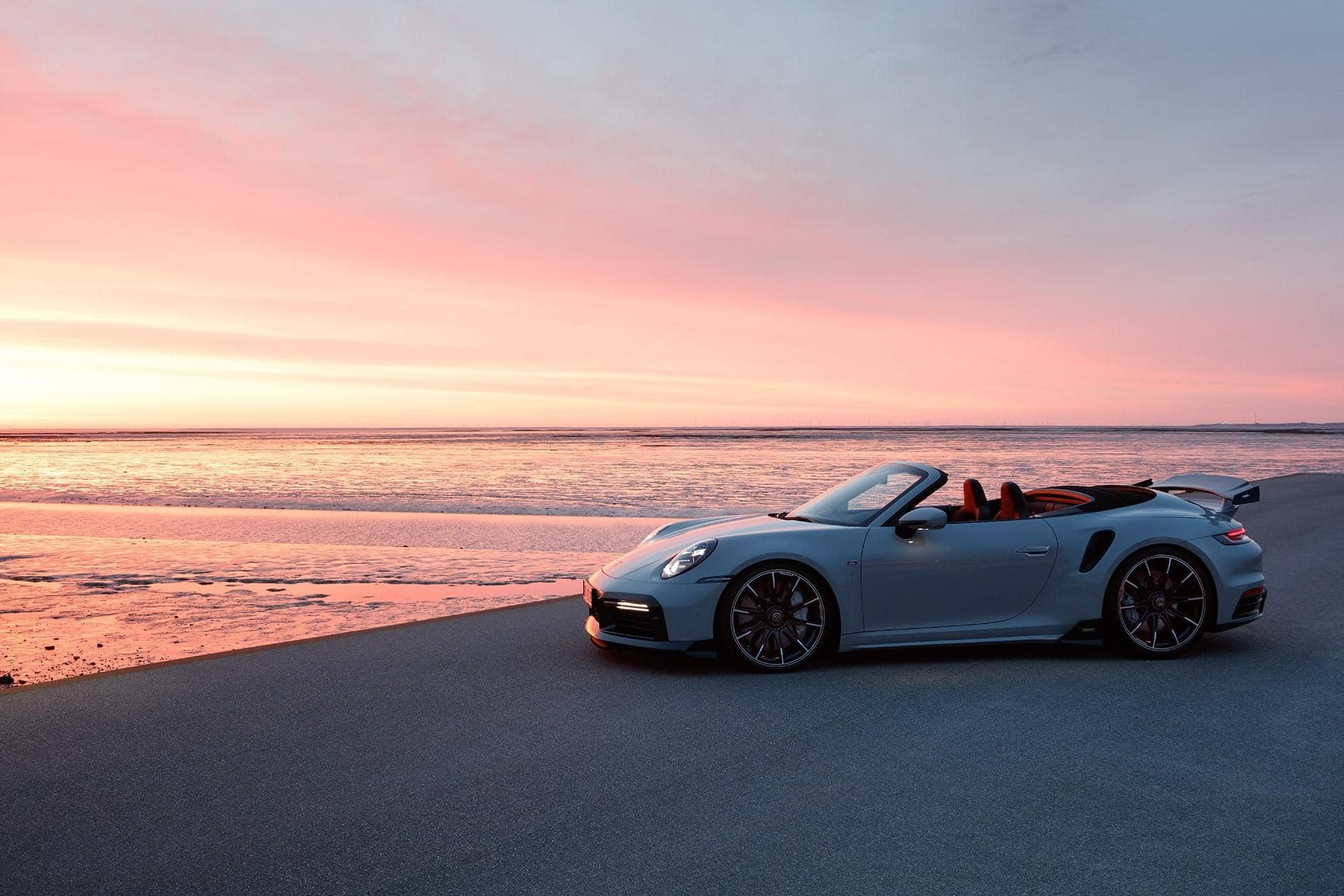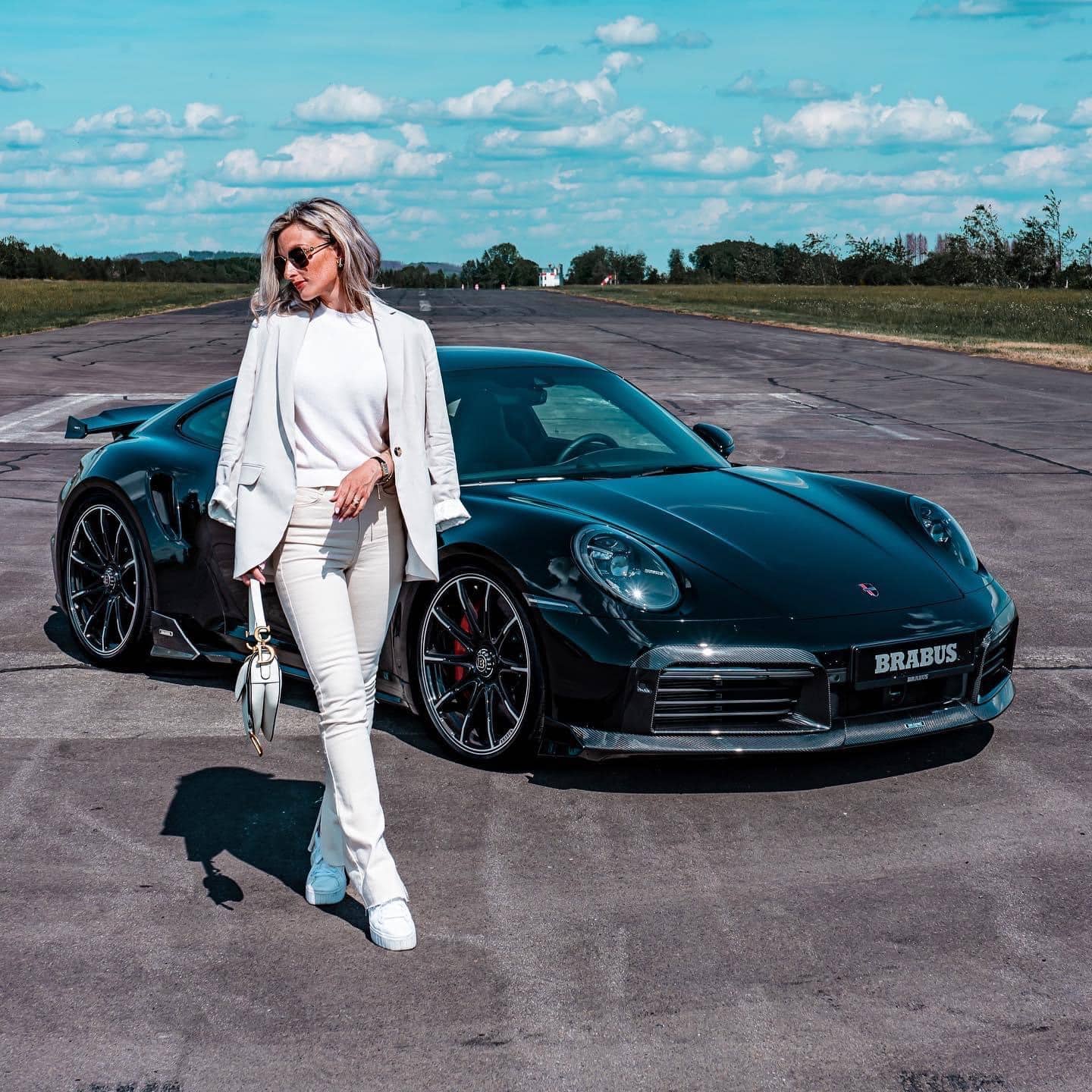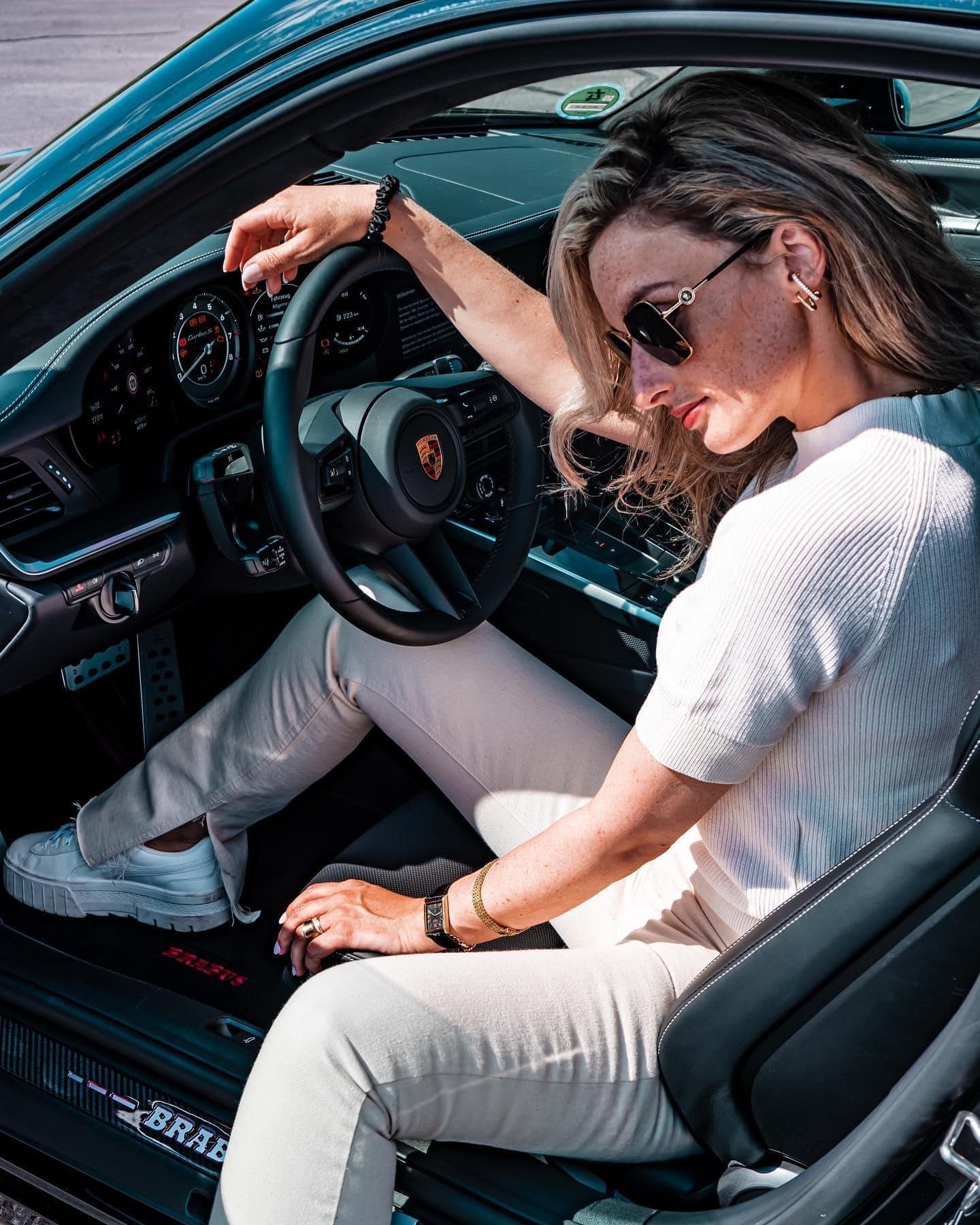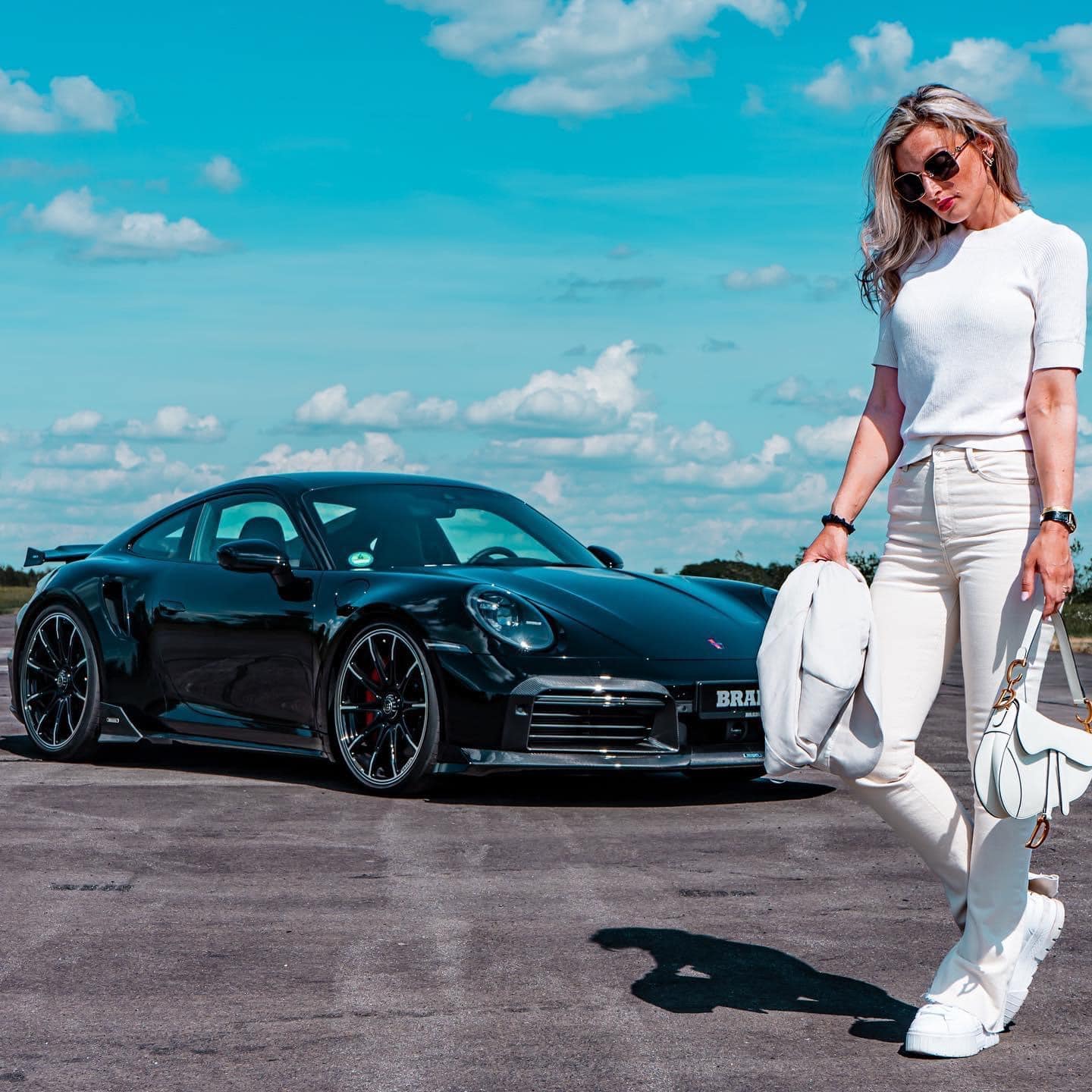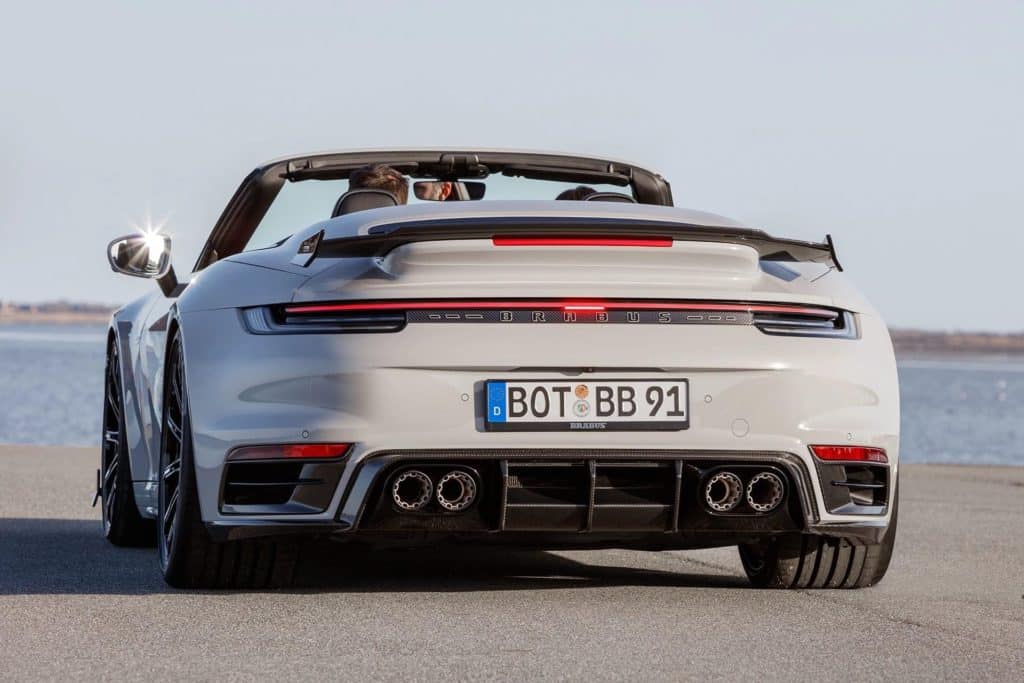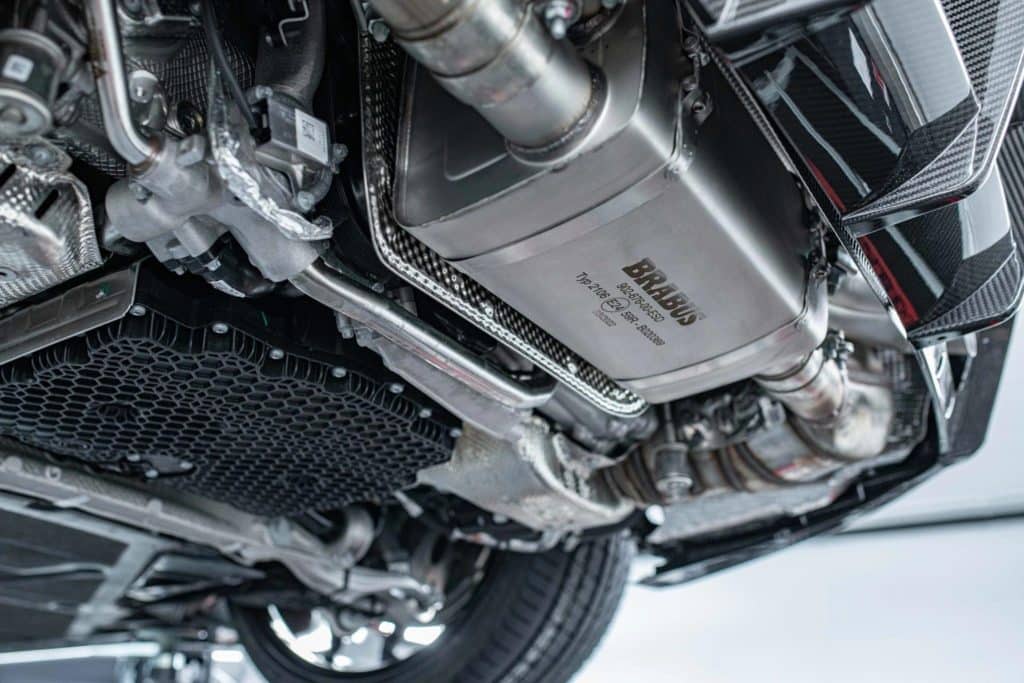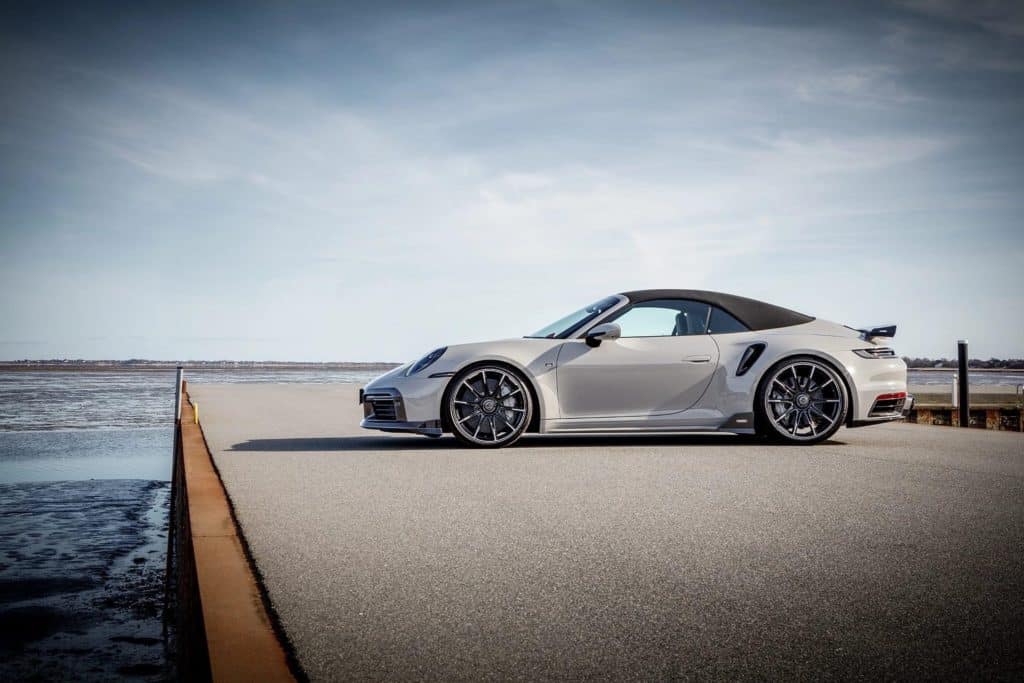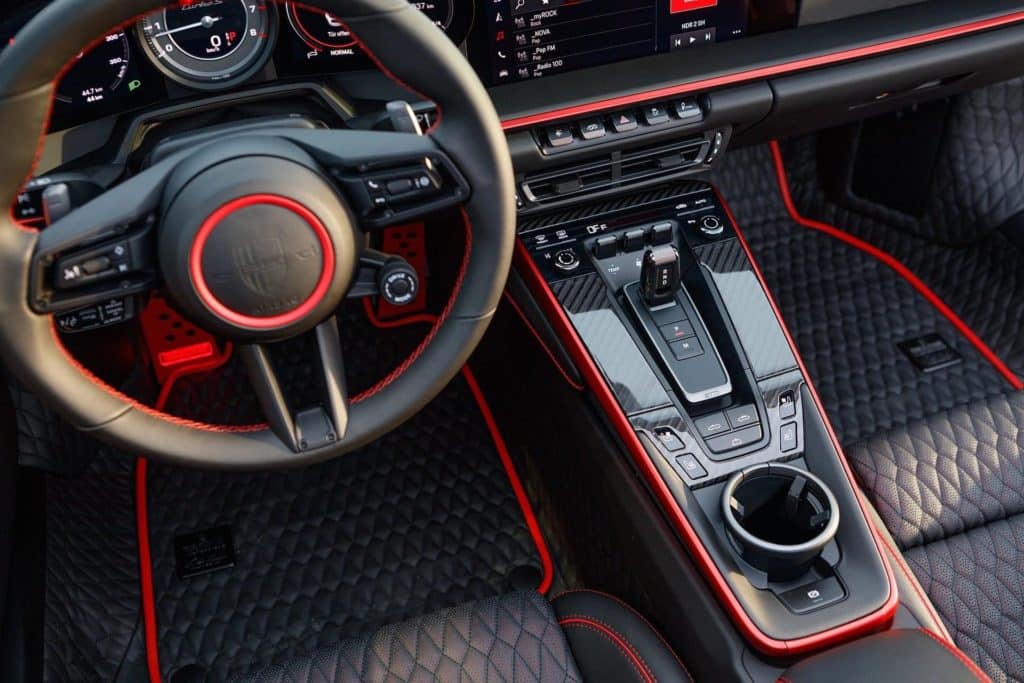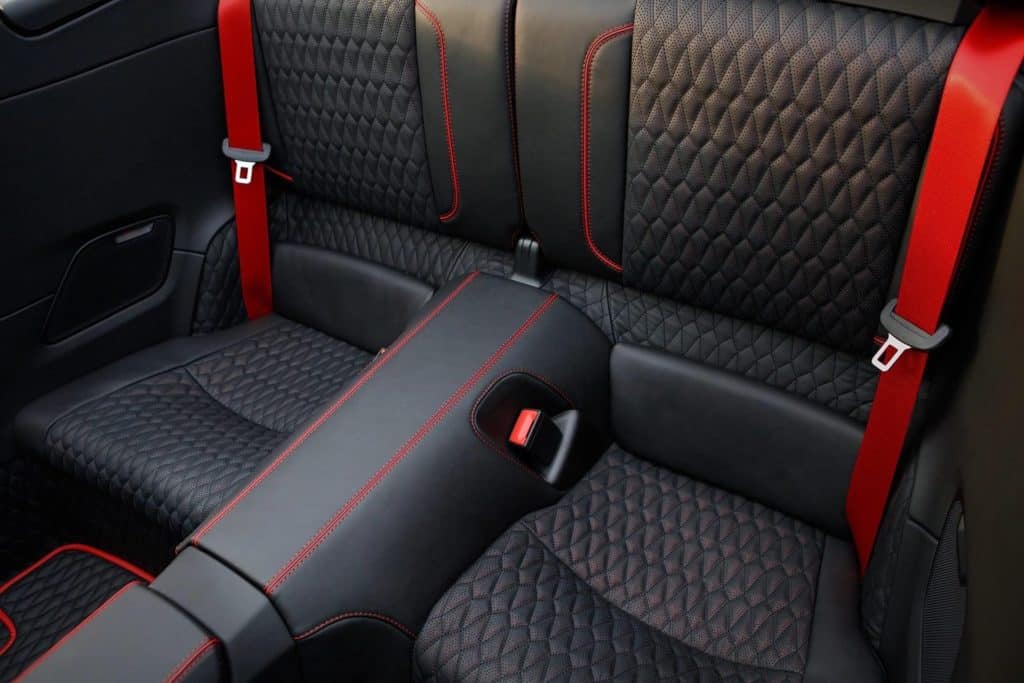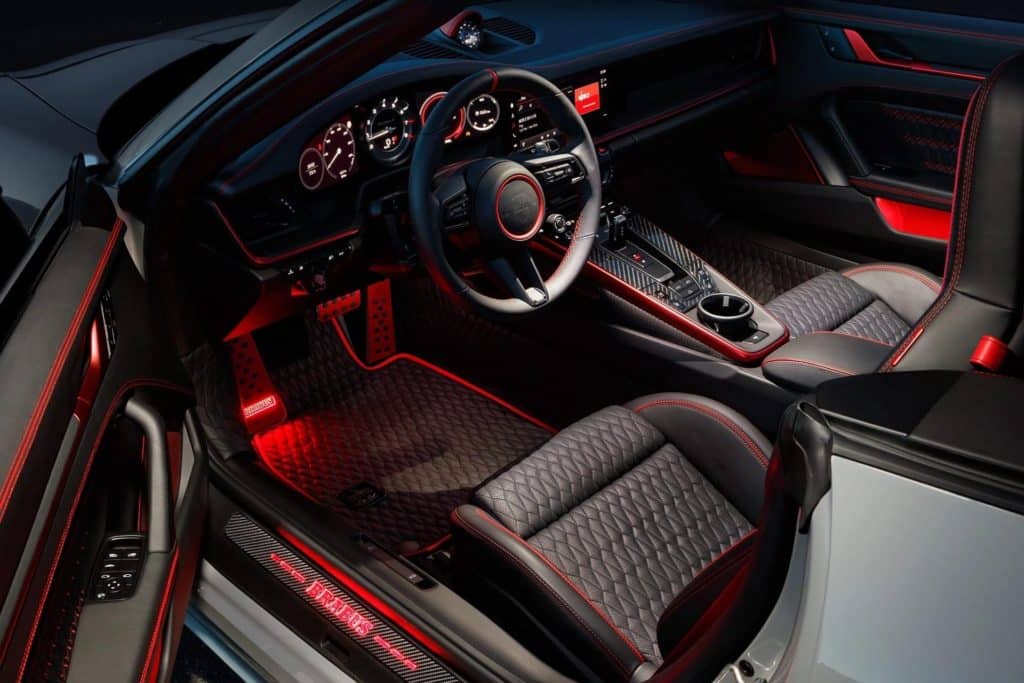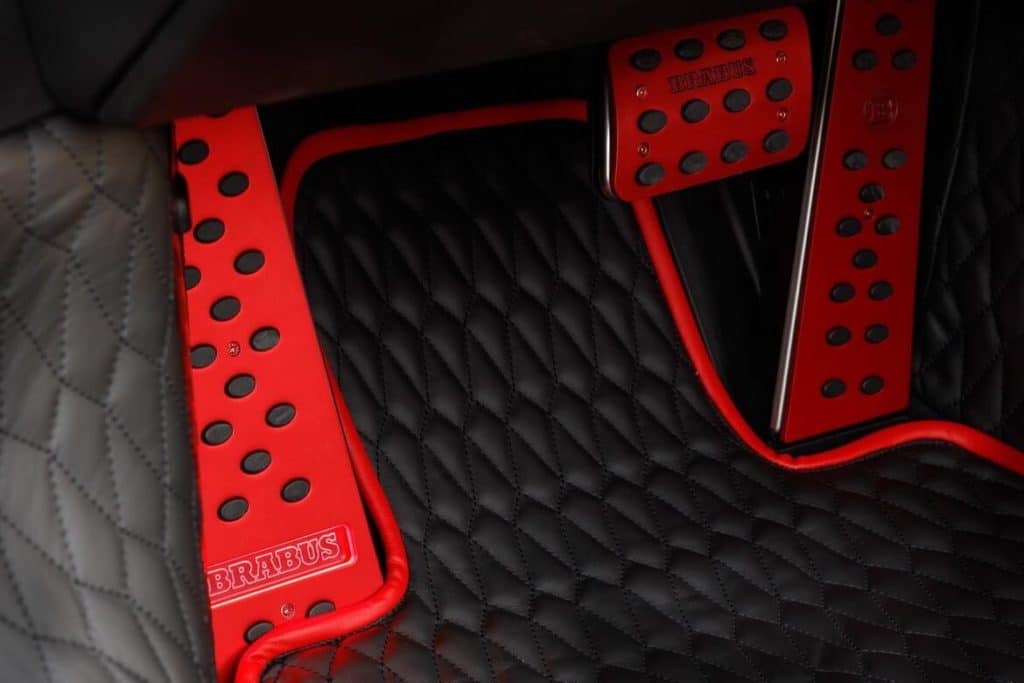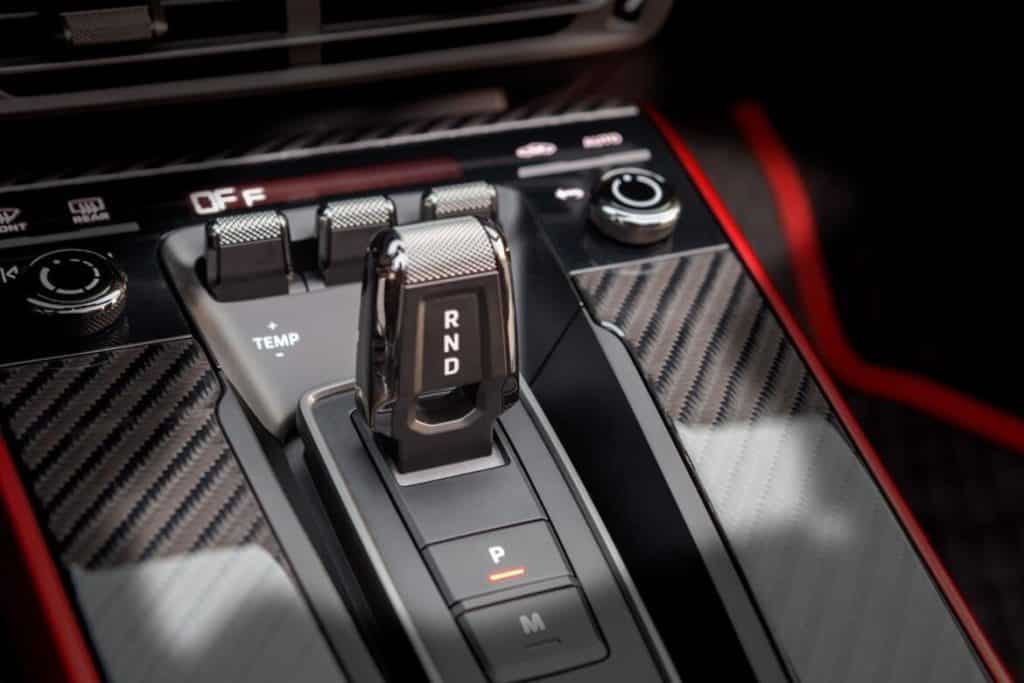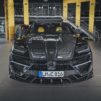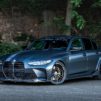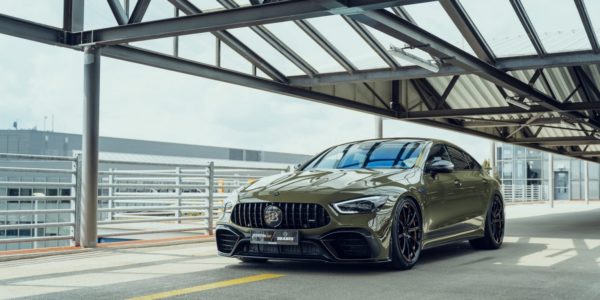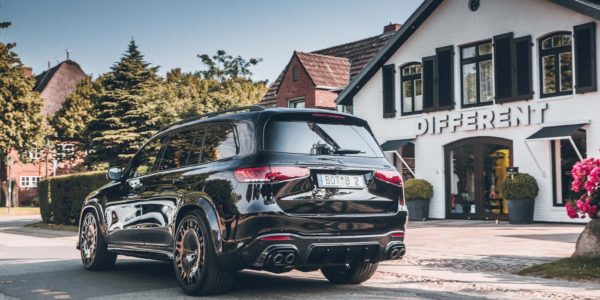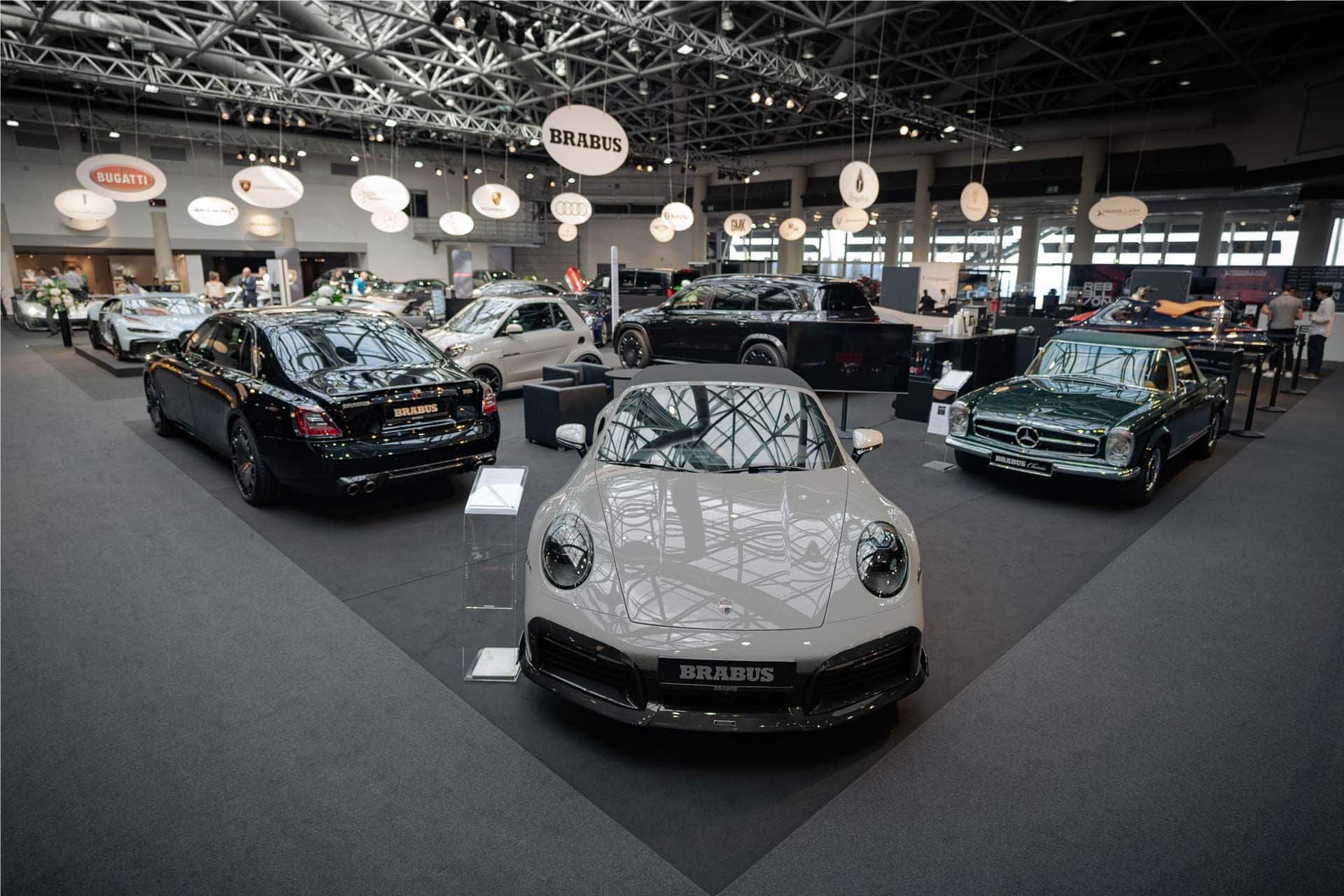
Brabus Porsche 911 Turbo S. Elegant. Iconic. Exhilarating.
The curtain rises on the new BRABUS-prepared high-performance supercar: Brabus Porsche 911 Turbo S. The tuner Brabus is now offering an exclusive development program for the current 992 series Porsche 911 Turbo S. For the turbocharged six-cylinder boxer engine, the engine engineers of the world’s largest independent car tuner have developed two BRABUS performance upgrades and a high-performance exhaust system made of ultra-lightweight INCONEL.
BRABUS engine engineers have been working on performance enhancements for the current Porsche 911 Turbo S models that are as powerful as they are stable. Their twin-turbocharged, six-cylinder 3.8-liter boxer engine offers factory reserves that have been awakened in elaborate tests on fixed and mobile dynos and in extensive track and traffic tests, without affecting stability. Just as naturally, all kits are TÜV-tested and come with the exemplary BRABUS Tuning Warranty® of 3 years up to 100,000 kilometers (according to the BRABUS warranty conditions, as of July 2013).
820 hp (603 kW) and a maximum torque of 950 Nm
In the top-of-the-line BRABUS PowerXtra P38S-820 variant, the engine develops 820 hp (603 kW) and a maximum torque of 950 Nm. Visually, BRABUS enhances the current 911 Turbo, whether coupe or convertible, with a new aerodynamic upgrade in exposed carbon and high-tech Monoblock Z “PLATINUM EDITION” BRABUS forged wheels in a combination of 21 and 22 inch diameters. The suspension is even more agile thanks to the height-adjustable BRABUS sport springs.
Based on the know-how gained in 45 years of tuning,
The BRABUS PowerXtra P38S-720 performance upgrade gives the supercharged Boxer a 70 hp (52 kW) boost in power. This is achieved by adapting an additional control unit to the electronic engine management system using plug-and-play technology, which updates the engine control with new maps for injection and ignition and increases boost pressure. This increases peak power from the standard 650 hp (478 kW) to 720 hp (530 kW) at just 6,900 rpm. At the same time, maximum torque increases from 800 to 900 Nm at 4,000 rpm. This allows the sports car to accelerate from 0 to 100 km/h in just 2.6 seconds. The top speed is electronically limited to 335 km/h.
911 Turbo S coupe or convertible
911 Turbo S drivers who want even more power can have their coupe or convertible equipped with the BRABUS PowerXtra P38S-820 kit.
This kit includes two special high-performance BRABUS turbochargers. A modified trunk assembly with reinforced axial bearings and a larger compressor and turbine unit with a modified VTG setting provide a maximum boost pressure of 2.1 bar.
The electronic engine management system has also been adapted to the new equipment. Again, a BRABUS PowerXtra auxiliary control unit is used, but its mappings have been specially adapted to the modified turbocharging system. After this modification, the engine shows even more remarkable performance: the maximum power of 820 hp (603 kW) is achieved at only 6,900 rpm. Equally impressive is the maximum torque of 950 Nm, which is already available at only 4,000 rpm.
BRABUS high-performance exhaust system
For these two performance levels, but also for any standard 911 Turbo of the current 992 generation, the installation of the BRABUS high-performance exhaust system is recommended. It is made of INCONEL, a particularly heat-resistant but extremely light alloy, which is also used in the exhaust systems of today’s Formula 1 racing cars.
Sound and performance are the highlights of this sporty 4-pipe exhaust system, which not only reduces exhaust backpressure but also has flaps for electronic sound management. From the cockpit, the driver can choose between the discreet “Coming home” mode and the open “Sport” position of the exhaust flaps, which results in a decidedly powerful boxer engine sound. Another special feature is the two BRABUS BoostXtra valves of the turbo system, which produce an exciting exhaust sound during load changes.
BRABUS PowerXtra
At the rear, the BRABUS PowerXtra P38S-820 engine enables the 911 Turbo S to achieve even higher performance. In perfect interaction with the eight-speed dual-clutch transmission and electronically controlled all-wheel drive, the exclusive two-door reaches 100 km/h in just 2.5 seconds. The top speed is electronically limited to 340 km/h for the sake of the tires.
The reduction of aerodynamic lift is of paramount importance for such a fast car. That’s why the BRABUS designers developed efficient and visually appealing body elements in carbon in a choice of glossy or matte finish in the wind tunnel.
BRABUS front spoiler
The BRABUS front spoiler with flaps on the left and right gives the sports car a pure racing spirit. The spoiler reduces the lift on the front axle at high speeds, which further optimizes driving stability. The function of the central section of the front apron, which extends downwards, remains unchanged, of course. Customized carbon elements for the large air intakes of the front bumper give the sports car an even more dynamic appearance. BRABUS flaps, attached to the rocker panels in front of the rear wheel arches, optimize the airflow around the rear wheels and give the Porsche an even more dramatic profile in side view.
BRABUS aerodynamic concept
The BRABUS aerodynamic concept of the 911 Turbo is completed at the rear by an exposed carbon diffuser with custom cutouts for the four 100-millimeter tailpipes of the BRABUS sports exhaust system. The standard element between the tail lights is replaced by a decorative panel with the embossed BRABUS logo. It is joined by the new rear spoiler, whose profile is positioned significantly higher above the hood than the standard spoiler. The sophisticated design with its vertical side panels of the same profile as the other flaps and the raised tear-off edge at the rear end of the wing produces increased downforce on the rear axle.
The “PLATINUM EDITION”
The “PLATINUM EDITION” Monoblock Z forged wheels with central locking also play an important role in the BRABUS design. With their different diameters on the front and rear axles, they emphasize the wedge shape of the sports car. The design, with its ten filigree spokes, is decidedly exclusive thanks to the contrast between the black paintwork and the polished parts of the surface. At the front, 9.5×21 wheels are used, while at the rear, the wheels measure twelve inches wide and 22 inches high. They are shod with Continental, Pirelli or YOKOHAMA high-performance tires in sizes 255/30 ZR21 at the front and 335/25 ZR22 at the rear.
Brabus individual suspension adjustment
In order to offer the 911 Turbo S driver individual suspension adjustment, BRABUS engineers have developed new height-adjustable sport springs. They allow the front and rear axles to be lowered by up to 25 millimeters, depending on the driver’s wishes. The active shock absorber adjustment remains unchanged. The lowered center of gravity not only makes the look even more exciting, but also makes driving even more direct.
BRABUS MASTERPIECE
The red lacquered badge on the seat backs documents that the interior of this refined convertible comes from the tuner’s in-house upholstery. The black leather was chosen to contrast with the grey paint, embellished with red piping and decorative stitching and perfectly finished to the last corner. Another BRABUS specialty is the shield-like quilting of the seat center panels and cockpit floor, executed with maximum precision and enhanced with equally precise perforations. The trunk can also be refined in the same spirit.
BRABUS real carbon elements, with a choice of glossy or matte finish, as well as aluminum components such as the pedals and footrest with illuminated BRABUS lettering, add a sporty touch to the cockpit. On the vehicle shown here, these parts, along with other elements of the dashboard and center console, have been glazed in red to match the interior.
Attractive BRABUS interior
Other attractive BRABUS interior styling details include the steering wheel with decorative stitching and 12-hour markers in red, and the red leather trim on the Sport Chrono clock on the dashboard. Door sill trim with an illuminated BRABUS logo that changes from red to white and back again is also part of the extensive range, as are high-quality floor mats and trunk mats with leather trim.
Brabus is no longer content with just refining Mercedes models, but is now also taking on Porsche, among others. The debut of the Brabus 820 is more than impressive, because now the McLaren 765LT Spider and the Lamborghini Aventador SVJ Roadster will have to dress up warmly. Brabus gives the Porsche 911 Turbo Cabrio an infusion of power from 478 kW / 650 hp to 603 kW / 820 hp.
RuF CTR 3
Porsche 911 tuning is a matter of faith. Some believe that the vehicles from Zuffenhausen should not be touched, while others believe that these sports cars can also handle more power. For several years, Ruf Automobile has been breathing life into the 911s. Radical cars like the RuF CTR 3 Clubsport with 541 kW / 777 hp and an incredible maximum torque of 980 Nm have cemented the Allgäu company’s reputation as a power prodigy. But now they’ll have to tighten their belts in Pfaffenhausen. Because the Mercedes specialists at Brabus have discovered their love for the most legendary of all Porsches. And as a rule, no short-tempered performance asthmatics come from Bottrop.
A wolf hypercar in the sheep’s clothing of the 911
With 478 kW / 650 hp, this is not the case with a Porsche 911 Turbo S anyway. Brabus adds a double power stage: either with 530 kW / 720 hp (zero to 100 km/h in 2.6 seconds, top speed 335 km/h), or with 603 kW / 820 hp and a maximum torque of 950 Newton meters. The latter power variant takes your breath away as soon as you accelerate using Launch Control, taking the 911 from a standstill to 100 km/h in 2.5 seconds and then to 340 km/h before the electronics put an end to the peak storm. These are absolute hypercar values, with which you can show a McLaren 765LT Spider the rear spoiler and even sprint past the Lamborghini SVJ Roadster. We sit in the comfortable Brabus buckets and can’t help but smile.
The Bottrop’s power
The Bottrop’s power cure relies heavily on a control unit that taps into the engine’s reserves a bit more. This is done via plug-and-play and with its own wiring harness. “The important thing is that the unit communicates with the motor electronics via the can-bus, so that overloading, for example, is avoided,” explains Jörn Gander, head of development at Brabus. As a result, the first power stage is installed within half a day. “We can ship the device and install it anywhere without any problems,” Gander explains. In the case of the top variant, the plug-and-play setup is not enough; the technicians also had to get to work on the hardware, i.e., the two turbochargers of the 3.8-liter boxer engine.
BRABUS Engineers
The modification measures include a larger compressor, a new larger turbine wheel and a shaft that includes a reinforced thrust bearing, as the components are heavier. The result is a boost pressure of 2.1 bar. To make the entire system work as if it came from a single mold, the engineers modified the variable turbine geometry setting and adapted the Brabus engine control unit accordingly.
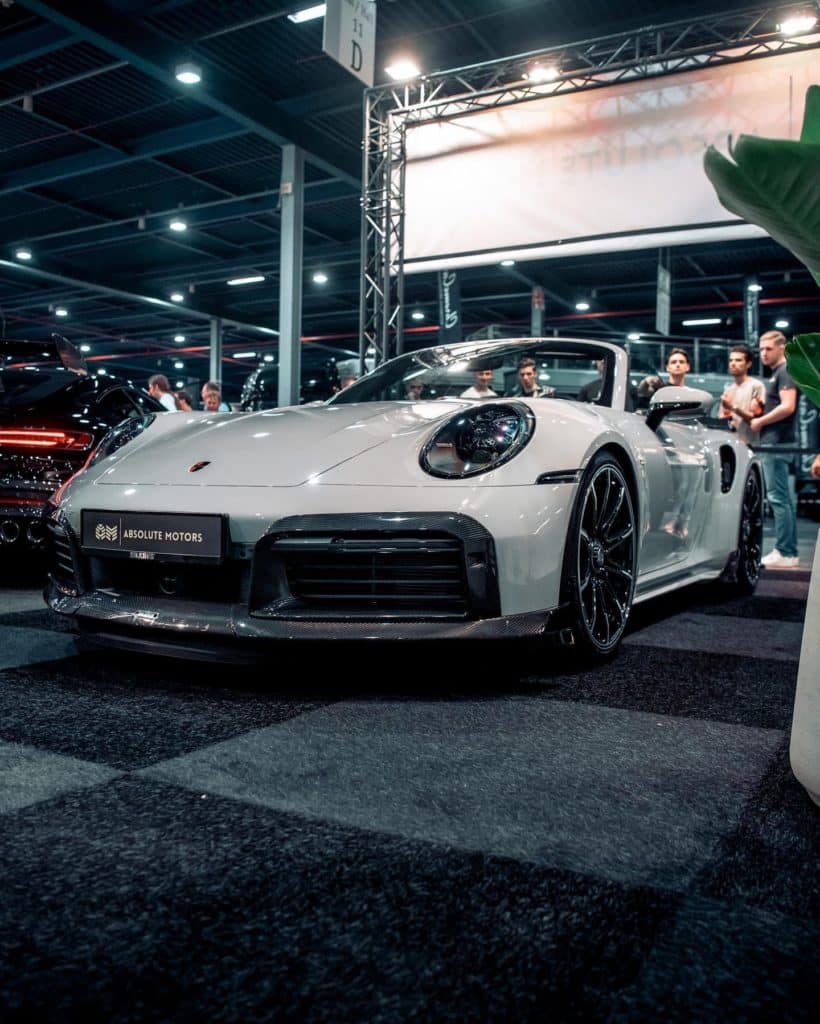
Brabus Porsche 911 Turbo S 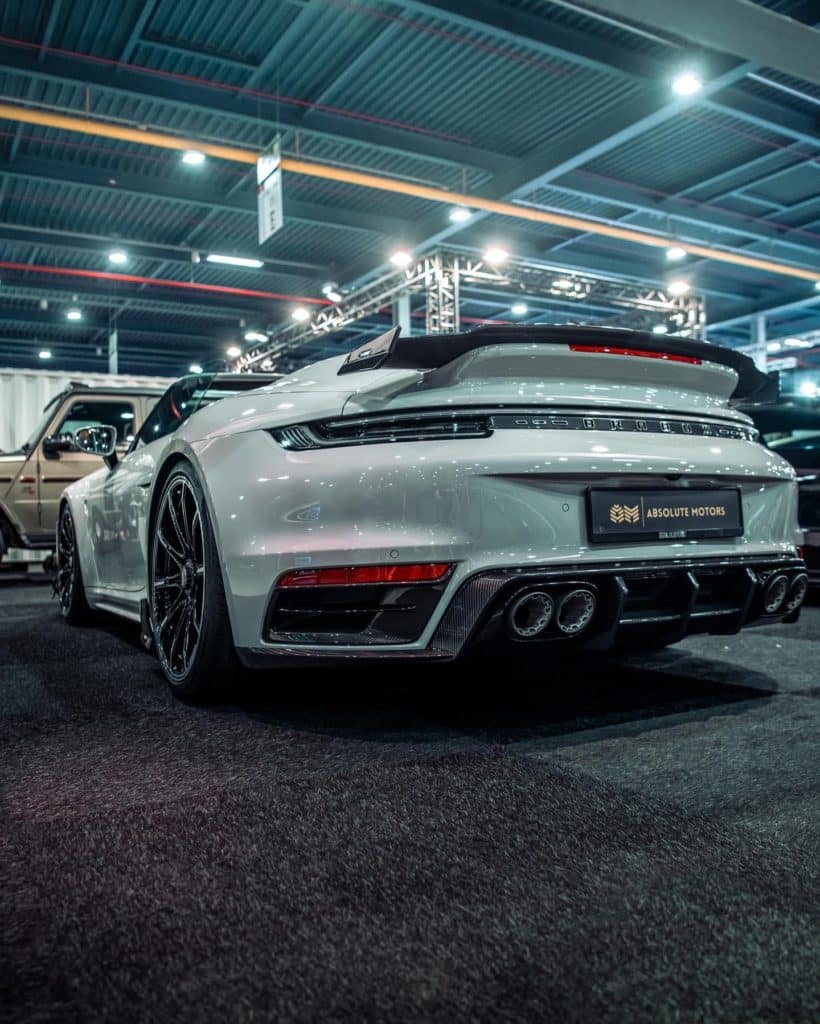
Brabus Porsche 911 Turbo S 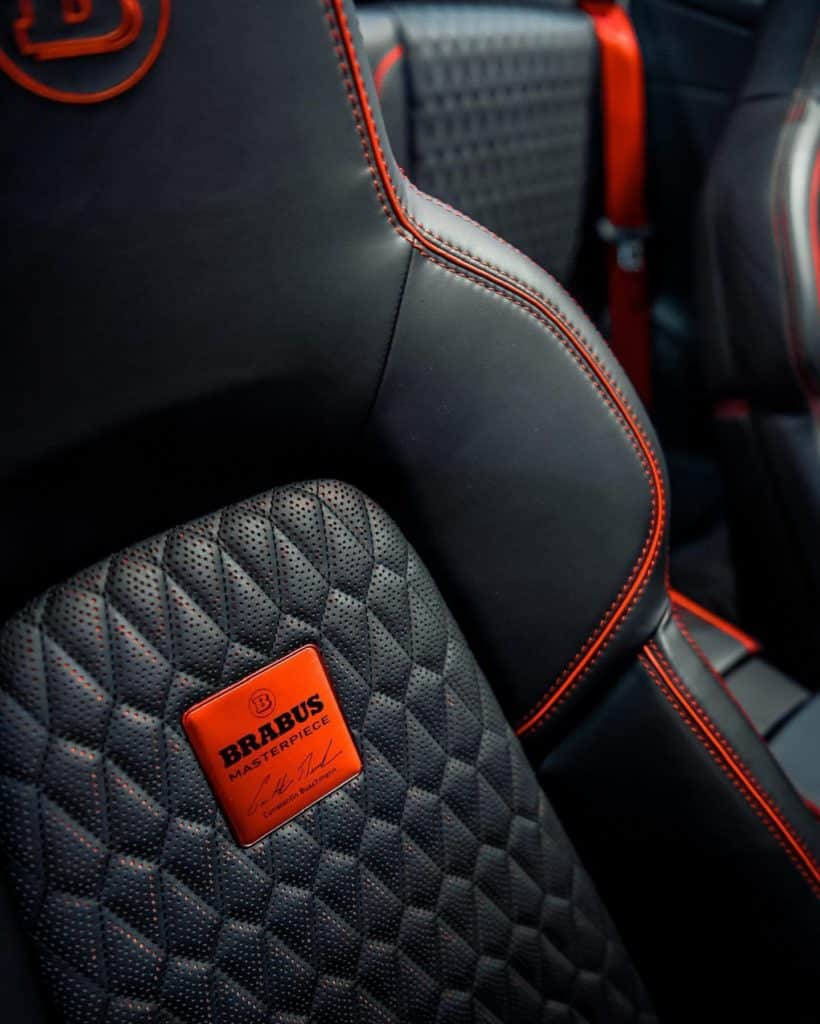
Brabus Porsche 911 Turbo S 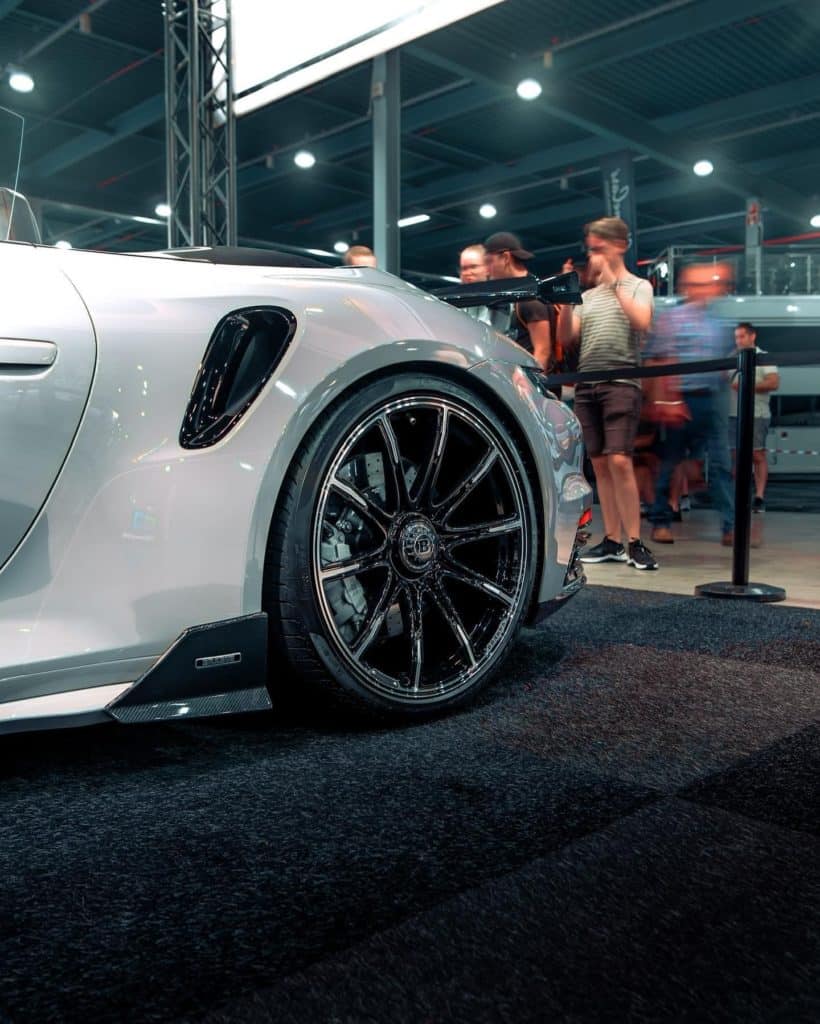
Brabus Porsche 911 Turbo S 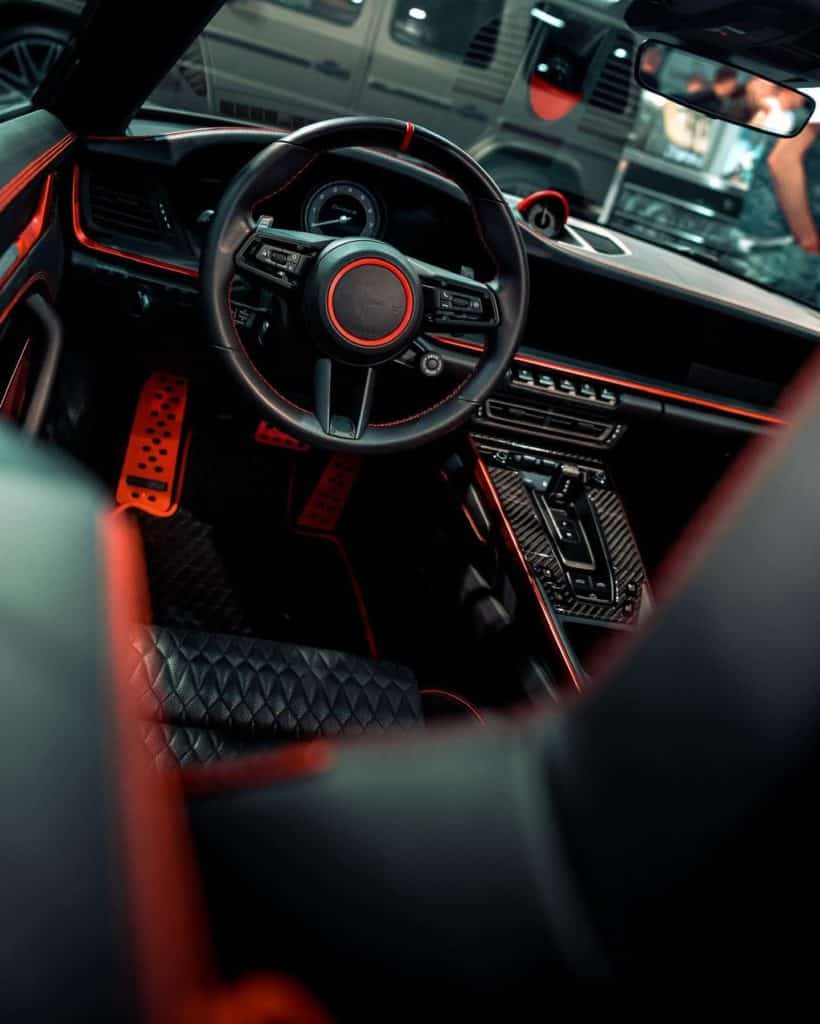
Brabus Porsche 911 Turbo S 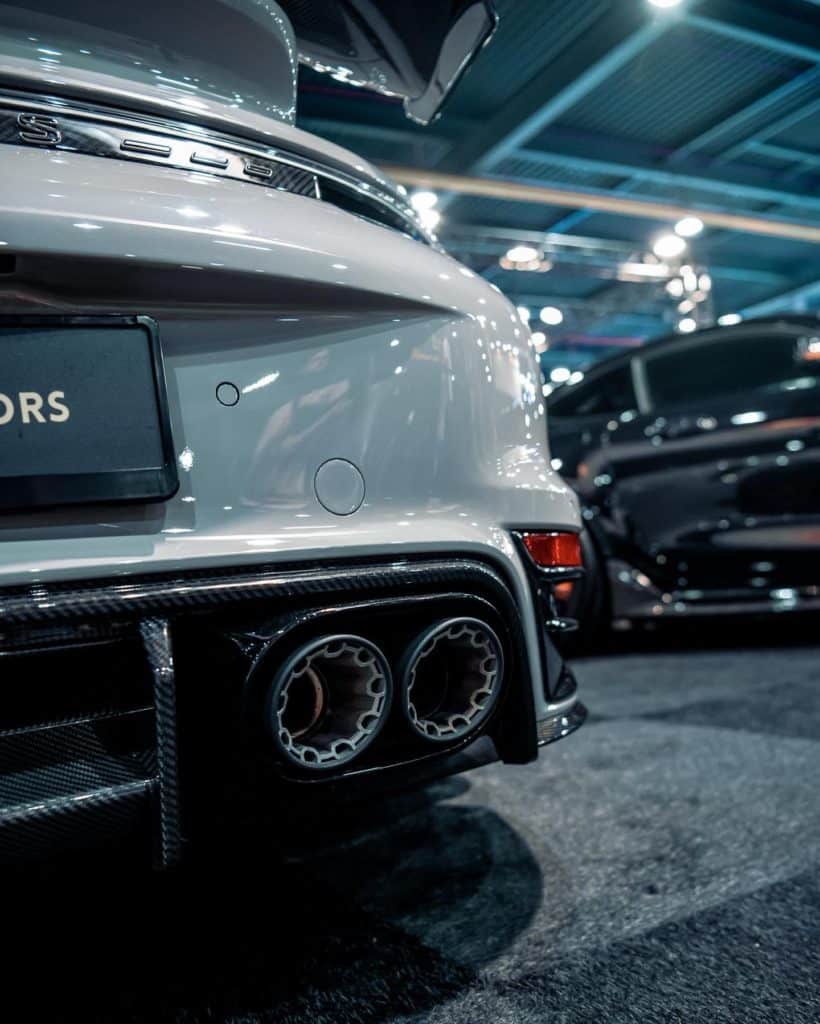
Brabus Porsche 911 Turbo S 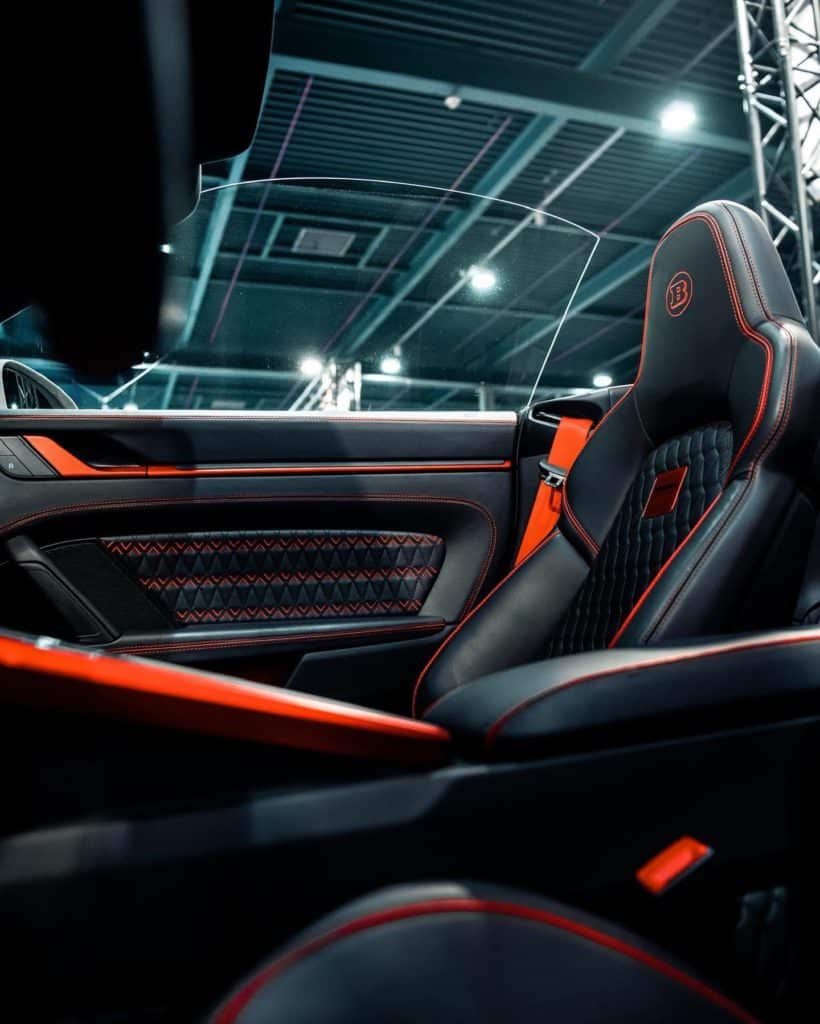
Brabus Porsche 911 Turbo S 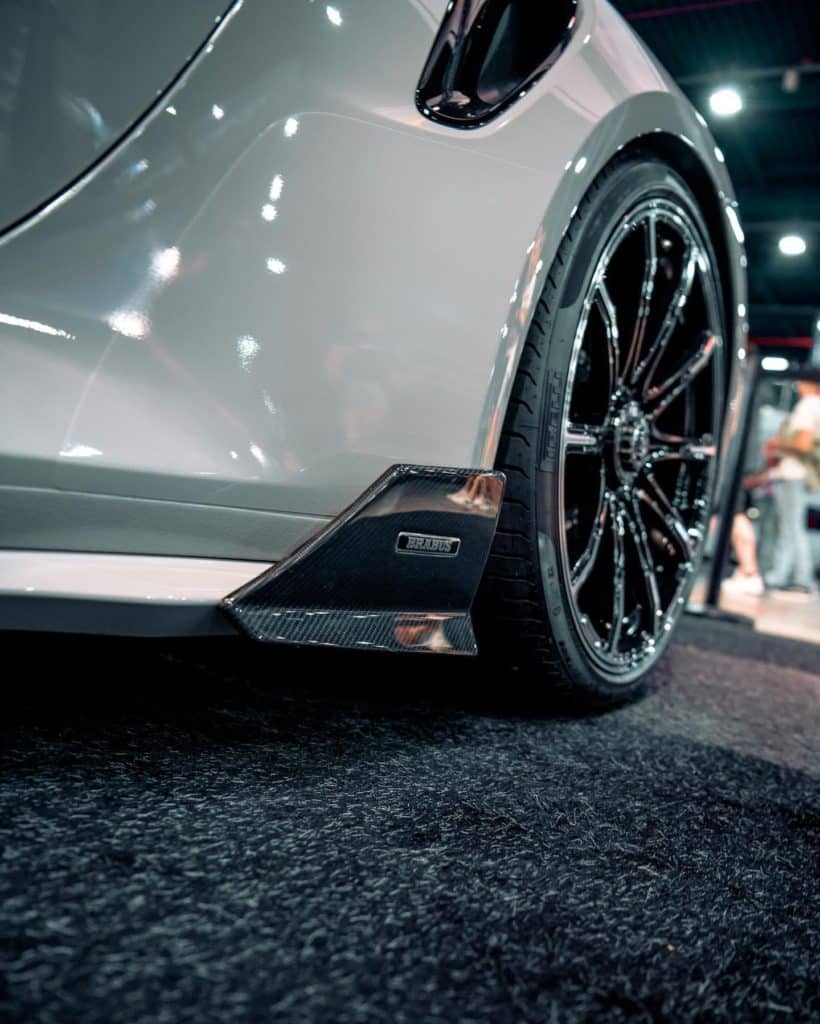
Brabus Porsche 911 Turbo S
In order for this power to be transmitted to the asphalt, the body can be lowered by up to 25 millimeters, while the adaptive dampers remain unchanged. The aerodynamic details, such as the front spoiler flaps or the exposed carbon rear spoiler, typical of Brabus, are not pure frills, but are aimed at increasing contact pressure, among other things. This is also apparent when driving, as the improved topless Porsche remains stable even at high speeds.
Porsche experts meet Brabus engineer
It’s a good thing the technicians didn’t interfere too much with the chassis tuning, because the experts at Porsche have already done all their work in this area. So the Porsche Brabus also whistles sharply around corners, the steering is typically Porsche precise and constantly informs the driver about the interaction between the front wheels and the road surface. The eight-speed dual-clutch transmission also does its job unnoticed, but it seems to take a little longer to breathe when downshifting before the car moves forward with brute force. The fact that maximum torque is available from 4,000 rpm makes driving easier, though.
Porsche 911 Turbo S: 0-100 km/h in 2.5 seconds With the help of the exterior
The Brabus sound world is an experience anyway. With every load change, the Brabus bypass valves blow with such voluminous verve that they are constantly provoked, if for no other reason. This symphony is enhanced by the sport exhaust system, made of Inconell instead of titanium, which generates a low exhaust backpressure. Especially when the driver opens the flaps with the push of a button, the sound stage becomes very loud. The high-tech material Inconell comes from Formula 1, is particularly heat-resistant, more robust than titanium and can also be used with thinner walls. A special highlight are the tailpipe covers, which are manufactured using 3D printing. Such expertise and sophisticated materials come at a price, which is not insignificant: 405,157.25 euros.
Brabus Porsche 911 Turbo S
The Porsche 911 Turbo S develops 650 hp and is therefore by far the fastest 911 of the moment in a straight line. Imagine what a 911 Turbo S with more than 800 hp can do…
This Porsche 911 Turbo S with over 800 hp is now available thanks to the German tuner Brabus. The company, which usually deals with extensive customization of Mercedes-Benz models, has increased the power of the 3.8 six-cylinder from 650 hp and 800 Nm to 820 hp and 950 Nm. The Brabus creation is thus 170 hp and 150 Nm more powerful than the original, which is already capable of reaching 100 km/h in 2.7 seconds. The 911 Turbo S, handled by the German tuner, accelerates from 100 km/h in 2.5 seconds and continues to do so until the speedometer stops climbing to 340 km/h thanks to the limiter. The standard version, with a top speed of 330 km/h, is only slightly slower.
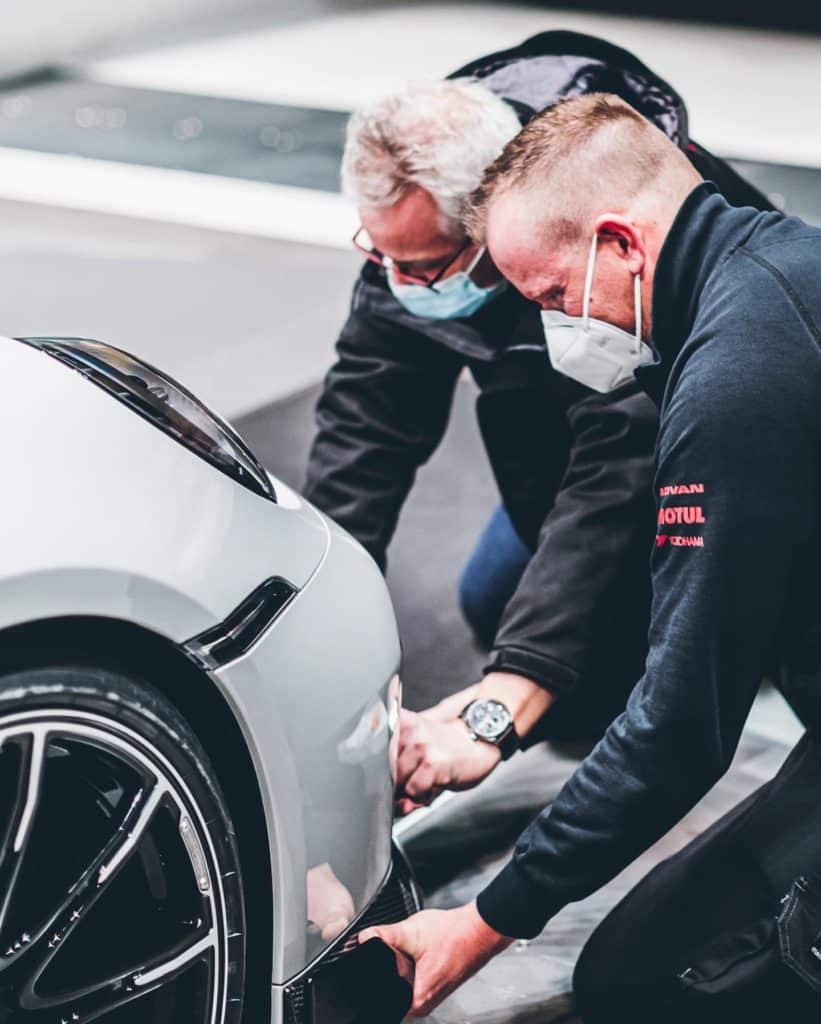
Brabus Porsche 911 Turbo S 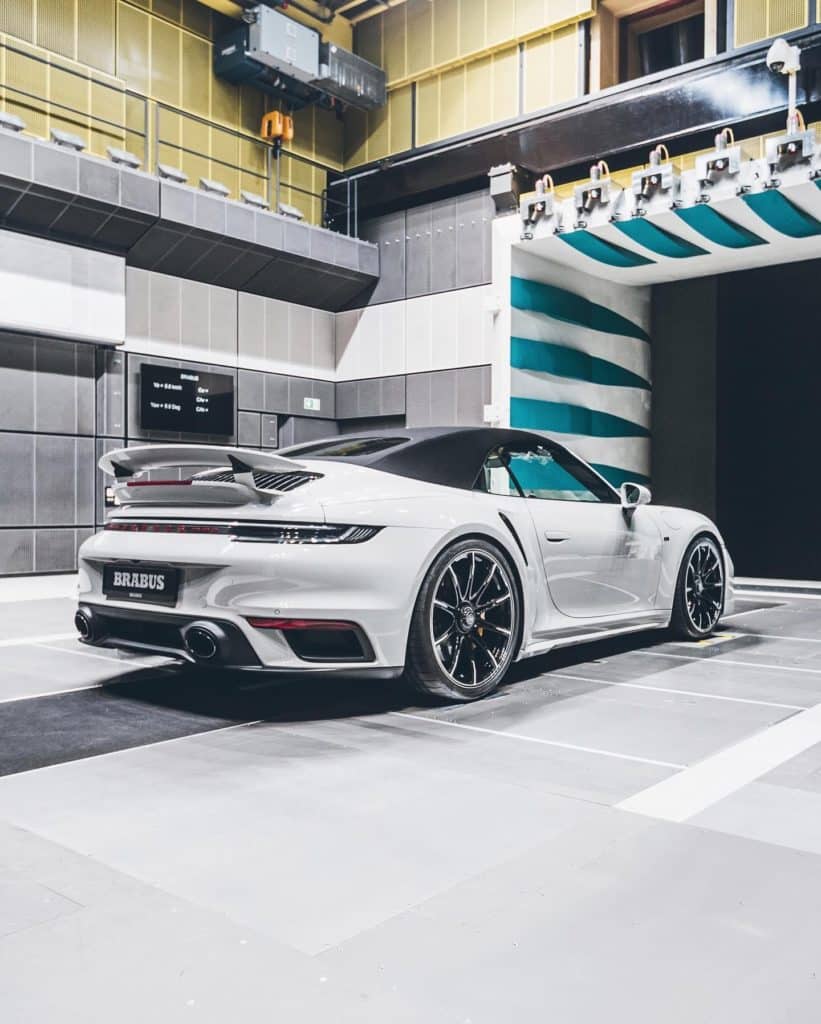
Brabus Porsche 911 Turbo S 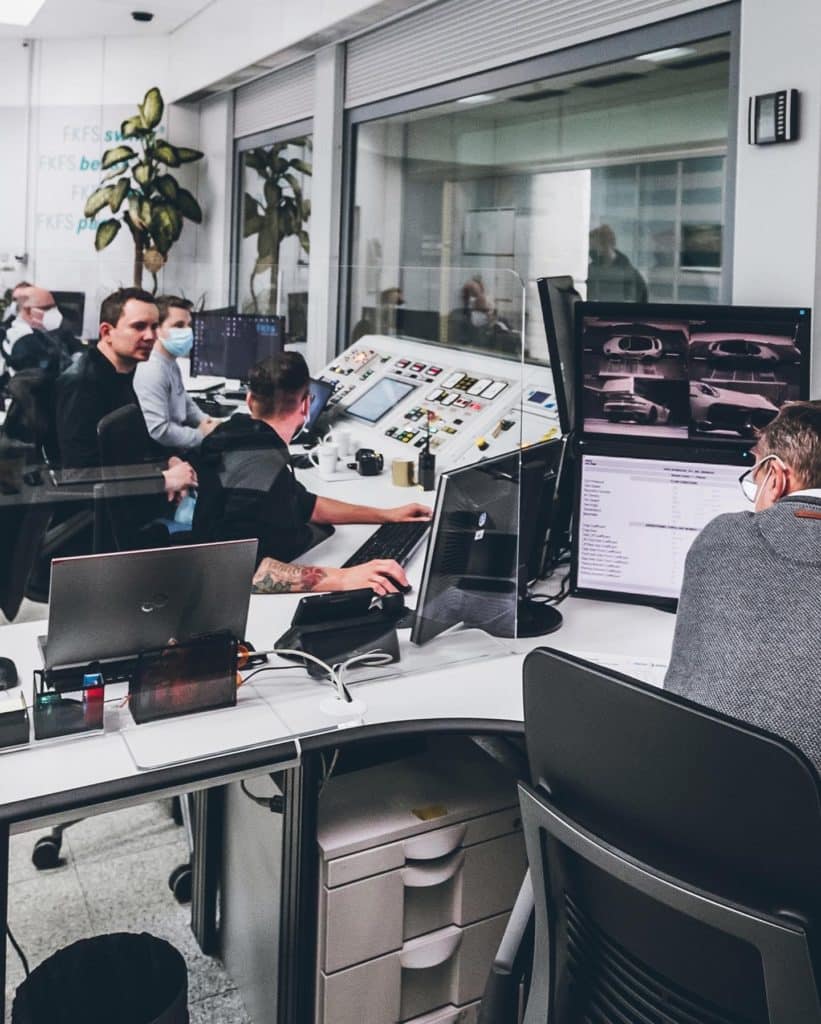
Brabus Porsche 911 Turbo S 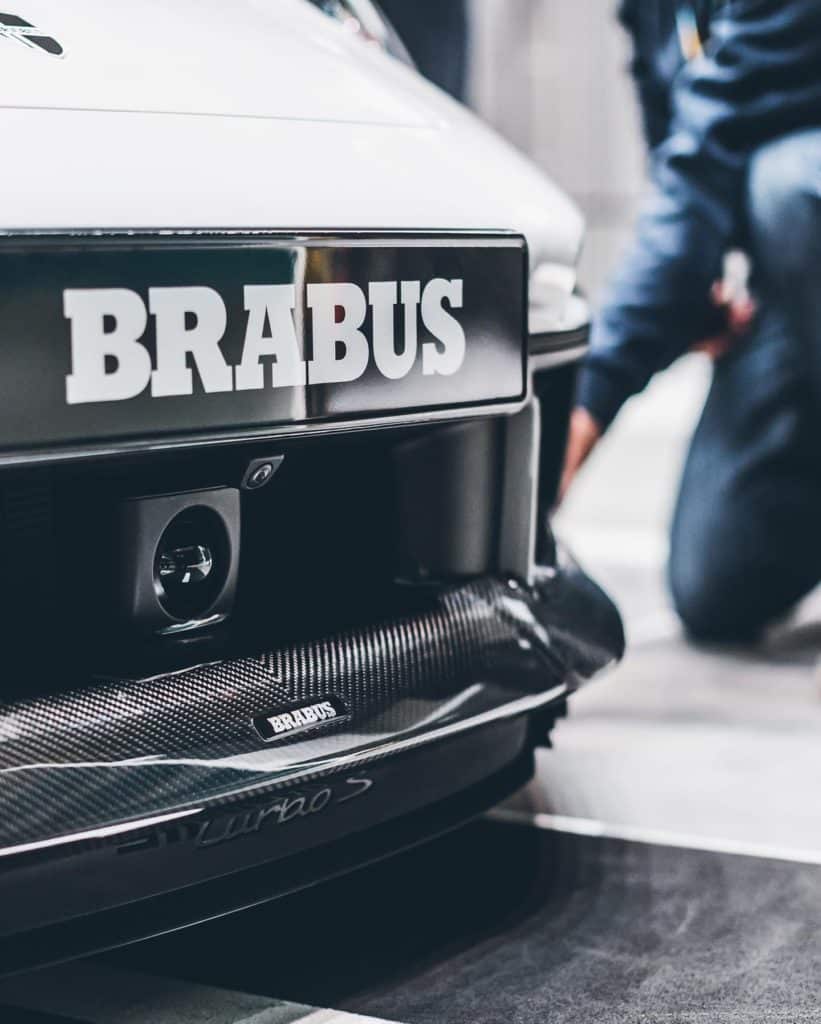
Brabus Porsche 911 Turbo S 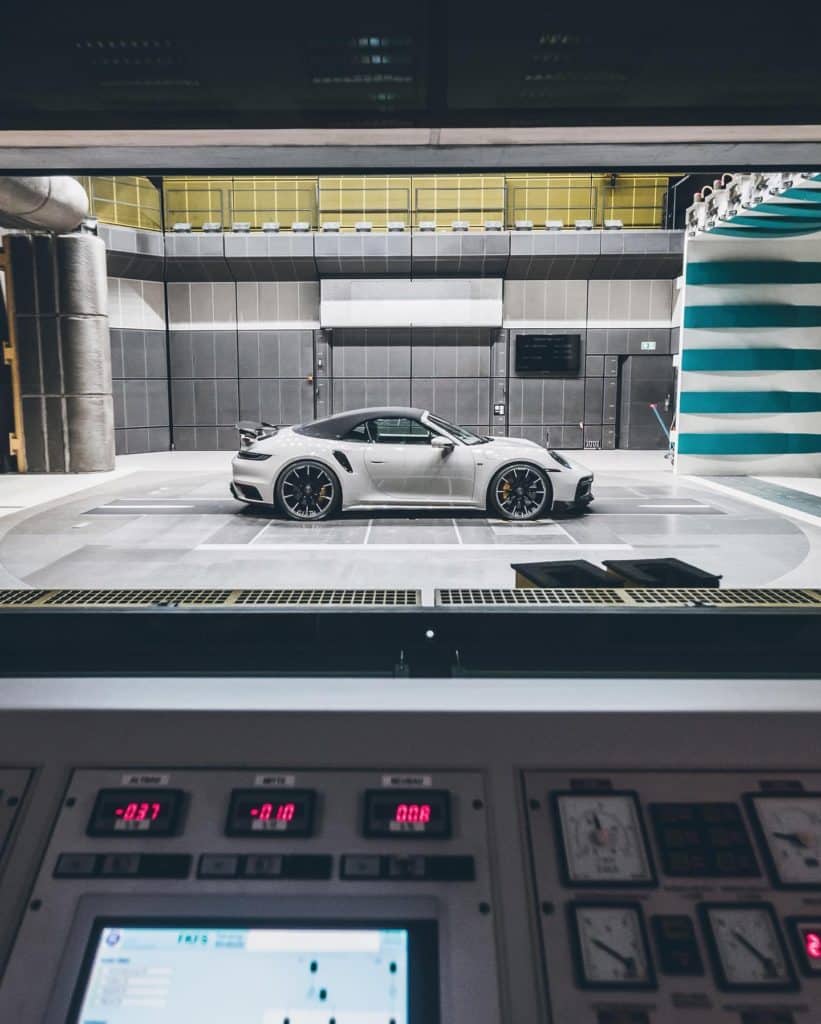
Brabus Porsche 911 Turbo S 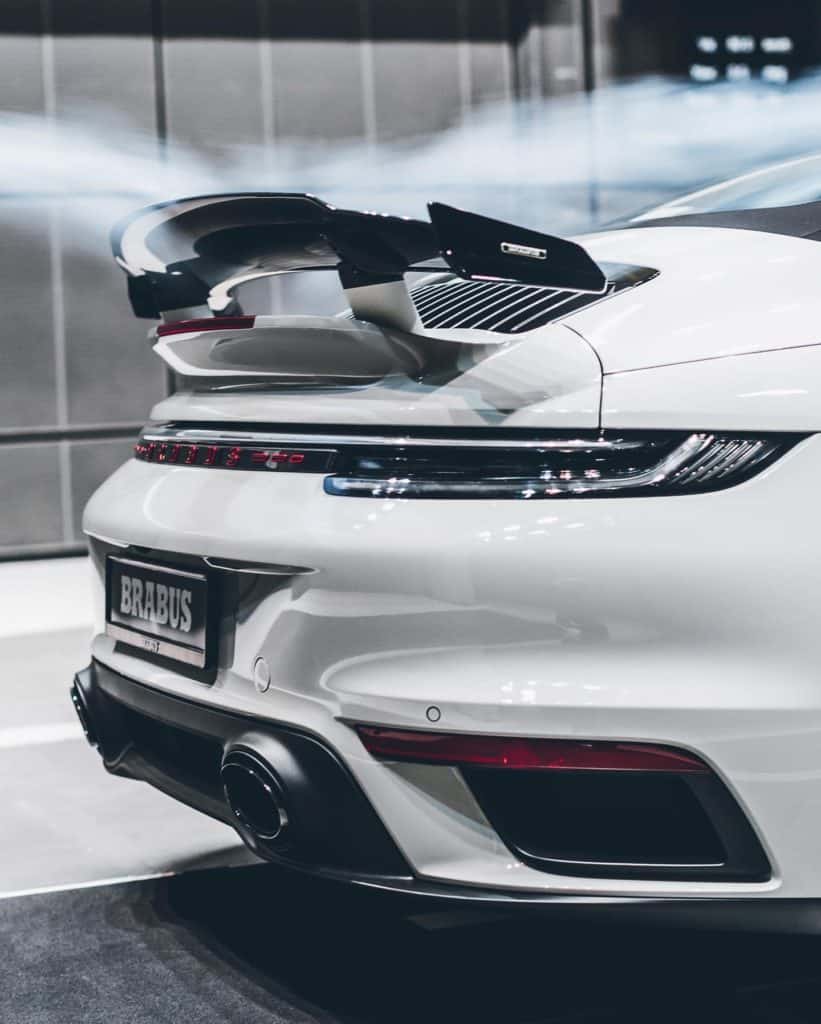
Brabus Porsche 911 Turbo S 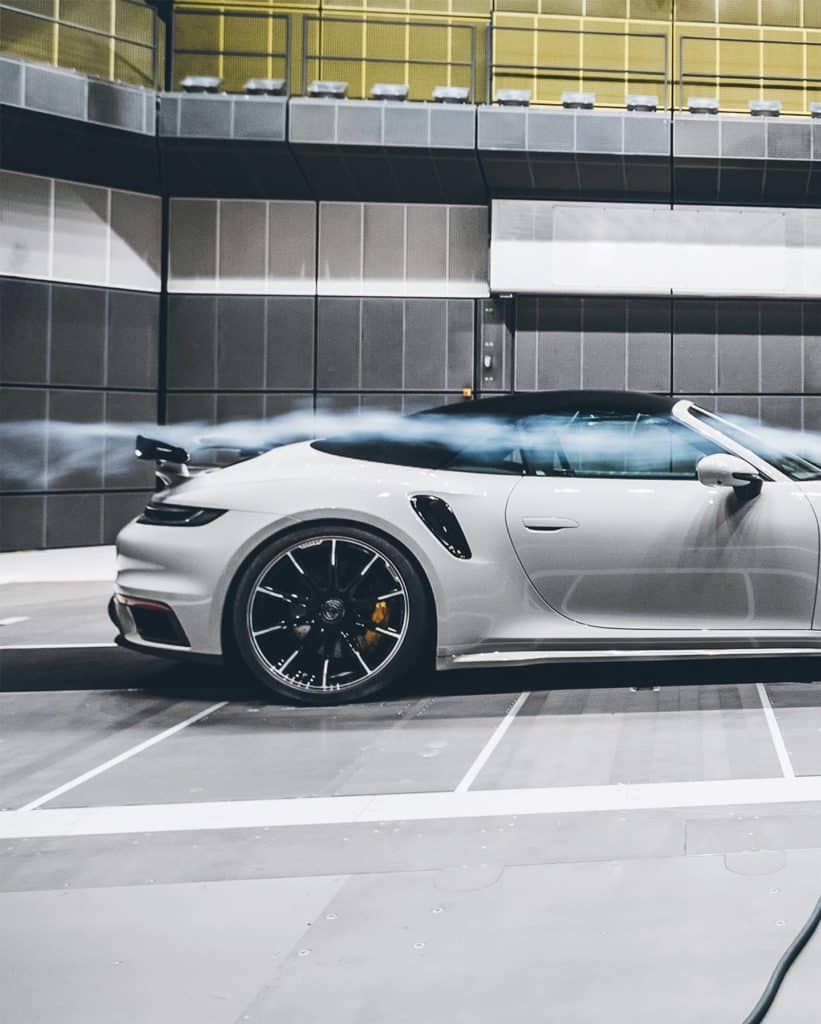
Brabus Porsche 911 Turbo S 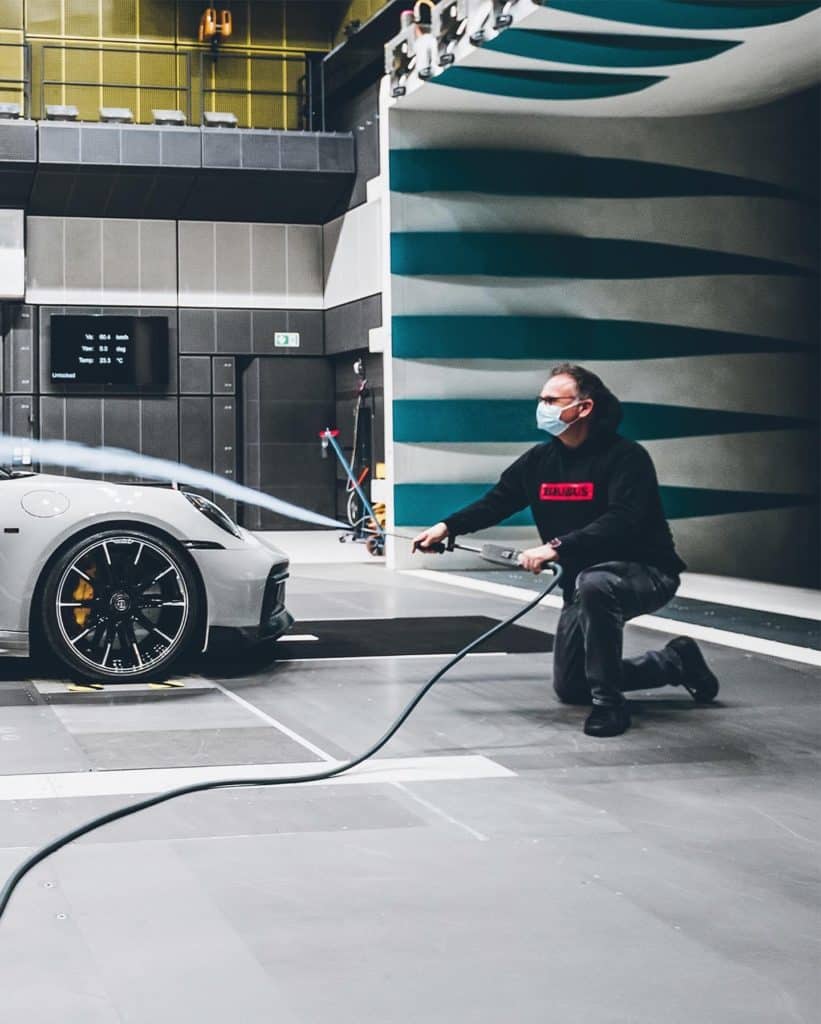
Brabus Porsche 911 Turbo S
Do you think 820 hp is too much?
Do you think 820 hp is too much? Then Brabus has a solution too. It also offers a power increase to 720 hp and 900 Nm. The 911 Turbo S with this power injection accelerates from 100 km/h in 2.6 seconds and reaches a top speed of 335 km/h. The middle ground between the standard 911 Turbo S and the 820 hp version.
The question of whether this extra muscle power is necessary remains unanswered. Brabus is well aware of this and immediately stuffs the 911 Turbo S with exterior extras to distinguish it from the normal Turbo S. The Turbo S gets an extra rear spoiler in addition to the standard one and is covered with carbon fiber parts all around. Brabus also removes the Porsche badges from the car and replaces them with its own badges. The tuner’s name is written in large letters on the back of the 911. Brabus brings out 21- and 22-inch wheels from its warehouse, as well as an adaptable exhaust system and sport springs that bring the car up to 2.5 centimeters closer to the asphalt.
Brabus refinement
The official price of the Porsche 911 Cabriolet Brabus 820 is €405,157.25 ($425,500) for the complete car, but the figures may vary as the Brabus refinement is well known for its tailor-made approach to satisfy all the requirements of the customers. Future owners to join the Brabus family will appreciate the exceptional performance, exclusivity, and engineering that this car can offer.


